


































































































Rainbow Park will close later this year for a series of major upgrades, following recordsetting visitation to Whistler’s destination parks.
A new report by the Whistler Multicultural Society shows that 72 per cent of non-white Sea to Sky residents report having experienced racism while living here.

For the first time in 18 years, there will be no fire dancers as part of Whistler Blackcomb’s weekly Fire & Ice show, a last-minute decision the dancers say “felt like a slap in the face.”
Officials in Pemberton are eyeing a January 2024 completion date for an additional 50 childcare spaces in the community.
Whistler Olympic Park is set to host the 2023 FIS Nordic Ski World Junior Championship, the largest sporting event in Callaghan Valley since the 2010 Winter Games.

Vancouver comic Katie-Ellen Humphries rediscovered her appetite for “joy and silliness” during the pandemic.
SFU could be the first in Canada to build its new medical school based on a “planetary health” curriculum. - By Stefan Labbé COVER Every time I look at the trees without leaves, along with a million other things in nature, I’m reminded how connected we all are. Their structure is almost identical to our veins and capillaries. There are so many forms in nature that exist in us all. It’s hard not to feel connected—and often a little hard to breath. - By Jon Parris // @jon.parris.art


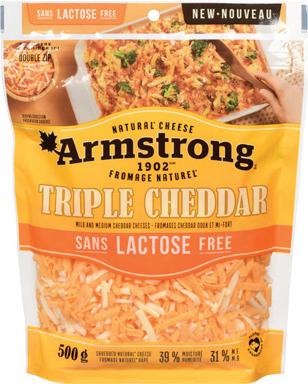



























































Founding Publishers KATHY & BOB BARNETT
Publisher SARAH STROTHER - sstrother@wplpmedia.com
Editor BRADEN DUPUIS - bdupuis@piquenewsmagazine.com


Sales Manager SUSAN HUTCHINSON - shutchinson@wplpmedia.com
Production Manager AMIR SHAHRESTANI - ashahrestani@wplpmedia.com
Art Director JON PARRIS - jparris@wplpmedia.com

TESSA SWEENEY - tsweeney@wplpmedia.com
GEORGIA BUTLER - gbutler@wplpmedia.com
Digital/Sales Coordinator AMELA DIZDARIC - traffic@wplpmedia.com
Production production@piquenewsmagazine.com
Features Editor BRANDON BARRETT - bbarrett@piquenewsmagazine.com
Arts Editor ALYSSA NOEL - arts@piquenewsmagazine.com
Social Media Editor MEGAN LALONDE - mlalonde@piquenewsmagazine.com
BRANDON BARRETT - bbarrett@piquenewsmagazine.com
MEGAN LALONDE - mlalonde@piquenewsmagazine.com
ALYSSA NOEL arts@piquenewsmagazine.com
ROBERT WISLA - rwisla@piquenewsmagazine.com
DAVID SONG - sports@piquenewsmagazine.com
Classifieds and Reception mail@piquenewsmagazine.com
Office and Accounts Manager HEIDI RODE - hrode@wplpmedia.com
Contributors G.D. MAXWELL, GLENDA BARTOSH, LESLIE ANTHONY, ANDREW MITCHELL, ALISON TAYLOR, VINCE SHULEY
President, Whistler Publishing LP
SARAH STROTHER - sstrother@wplpmedia.com
Subscriptions:


















AS SOMEONE WHO HAS reported on all things Whistler for more than a decade now, I have written my fair share of stories about the resort’s affordable housing crisis that has only seemed to get worse with each passing year.


If you read last week’s illuminating cover feature by Róisín Cullen, (“Wake-up Call, Pique , Jan. 19), you got to see just how dire
BY BRANDON BARRETTthe situation has become for many young newcomers to town, who often sacrifice a sizable chunk of their income, well-being and dignity just for a shot at living the Whistler dream.
It’s hard to hear these harrowing stories winter after winter and not feel like the system we rely upon to provide this inalienable human right is somehow broken. How, in one of the wealthiest communities in one of the most progressive, modern nations in the world, are we still unable to safely house so many of our own?


Quite often the common refrain you hear after questions like these is that housing is a complex, multi-faceted issue that can’t be solved with a silver bullet, which is not inaccurate, of course, but ignores a hard truth at the core of Western society’s longstanding housing shortage that rarely gets talked about.
In a recent piece in The Atlantic exploring American homelessness, staff writer Jerusalem Demsas describes an inherent

contradiction at the root of the issue that has effectively clogged the housing continuum for Americans in cities across the U.S.
“Liberals have stated preferences that housing should be affordable, particularly for marginalized groups that have historically been shunted to the peripheries of the housing market,” he writes. “But local politicians seeking to protect the interests of incumbent homeowners spawned a web of regulations, laws, and norms that has made blocking the development of new housing pitifully simple.”




We’ve seen this dynamic play out again and again across Canada, too. Each provincial or national election cycle, the candidates come out making grand promises to build more housing, but by the time a project filters its way down to the local level, far too often
process” made it much tougher to get housing built.

For an example of a city that has taken the opposite approach, let’s look to Houston, largely free of the kinds of regulations and requirements of public input that slow down development elsewhere, the city has been on a building spree of late, where nearly 40 per cent of homes on the market in the fourth quarter of 2021 were new builds, the highest rate in the nation. Houston has also placed a big emphasis on permanent supportive housing, which has contributed to lowering its homelessness rate by a whopping 62 per cent since 2011.
The Resort Municipality of Whistler (RMOW) has long prided itself on its public engagement, and the “enhanced rezoning
been met with opposition from neighbours. I’m not saying some of that opposition isn’t legitimate, by any means, but there’s a sad irony about a community that continually calls for more housing only to change their tune as soon as a development is set to land in their neighbourhood.
“Can’t build anything until every last NIMBY has lost their voice from shouting— and when we do, it won’t make a difference, because we waited too long and reduced the development to its bare bones,” Pique editor Braden Dupuis put it so succinctly in a recent column.
Even by the over-regulated standard of Canadian municipalities, Whistler is a unique animal. We have strict design and energy efficiency guidelines, a notoriously slow

it’s met with opposition from neighbours and community interest groups which have a number of tools at their disposal to keep new development out of their backyards.
As historian Jacob Anbinder explains, in the ’70s and ‘80s, “the implementation of height limits, density restrictions, design review boards, mandatory community input, and other veto points in the development

process” it voluntarily implemented for the incoming development at Northlands Boulevard—the largest remaining piece of undeveloped land in the village—adding an extra layer of community engagement than it would normally be required to meet, is a prime example. And yet, like clockwork, nearly every major housing proposal that has made its way to council in recent years has
permitting process at municipal hall, and a complicated zoning framework with varying housing types and classes.
I’m not even sure how you untangle this convoluted web of regulations without tearing the whole system down. But I do know that if we want to build more affordable housing, maybe it’s time we take a page from Houston’s book, and get out of our own way. ■
Houston has also placed a big emphasis on permanent supportive housing, which has contributed to lowering its homelessness rate by a whopping 62 per cent since 2011.


I remember the good old days skiing Whistler. Lining up in the gravel parking lot to load up on the gondola or the Olive Chair. After the up to two-hour ordeal to get to Roundhouse level, it was a challenge to get 15,000 vertical feet on those fixed-grip double chairs. At least we knew most of the people in the queue and could decide which house party we wanted to attend that evening. Now I can get that amount of vertical in under two hours and head home for lunch to avoid the high cost of food and staffing issues that impacts every Canadian business from coast to coast to coast. All this with a ski pass that is cheaper than it has been in 20 years and affords international opportunities to ski and ride.
I remember skiing down Olympic Run to the garbage dump and taking a bus back to Creekside to load up the mountain again. Ironic how we had to do the reverse this year prior to the supply chain issues being resolved for the new Creekside Gondola. The whole process was rather well organized, and a great effort was made by our local senior management and staff to get the lift operational by the holidays.
While the delivery of the music is different
today, I enjoy listening to the Hairfarmers, DJ Foxy Moron and Vinyl Ritchie at various mountain venues. On top of that, the Longhorn Saloon graciously shares their music with everyone. As for events, now that the dastardly disease that shall not be mentioned is somewhat in our rearview mirror. We have the Whistler Cup, the World Ski & Snowboard Festival, Crankworx, a variety of World Cup bobsleigh, skeleton and luge events at the sliding track and world class Nordic events in the Callaghan, among others.
There is little doubt that the business of skiing and riding has changed over the years and the current situation is simply the manifestation
of what Intrawest helped create in the 1980’s. For a good read, Downhill Slide, written by Hal Clifford in the early aughts was prescient about the evolution of the ski industry. You can get the book the old school way by asking Dan and his crew at Armchair Books to order it in.
John









Nadeau // Whistler






Vail is a four-letter word. Or at least it used to be in our house. Things are improving with the new Creekside Gondola and the elimination of the reservation system, which admittedly was a








function of COVID-19 anyway. But the food still stinks (oops—shrinks; well, both actually). And who is setting these prices?









I miss the Mountain Hosts and the staff at the Roundhouse, Rendezvous and Glacier Lodge who used to be skiers. Didn’t everyone who worked on the mountain get a pass? Or a restricted pass? It makes me sad that the community of skiers on the mountain is a shadow of its former self. But I think I may have a solution. Or at least a suggestion for our American overlords.
One thing that can cure nearly all ills and give you a boost in the bargain is coffee. If Vail Resorts is going to charge more than $200 a day for a lift pass on select days and serve veggie chili in cups for $20, they can at least offer good coffee. Not good coffee—espresso. The coffee bar at the top of the stairs in the Roundhouse is an excellent example of a service the mountain has truly managed to get right for its skiers. Hot, fresh and available with a shot of Baileys or Schnapps, a good coffee bar is unbeatable. It just needs an upgrade. With a little more capacity and a broader selection of drinks, the top of the mountain will help this place to live up to my expectations. After all, Whistler Mountain is my single favourite playground.
During the pandemic-imposed reservation system, I determined the best timeslot to reserve a table at the top of the mountain was not noon or 1 p.m. It was 2:30 p.m. You don’t really need a reservation at that time, but





we did last year. At 2:30 p.m., we can roll up from a day of carving, meet a few friends for a coffee—a Roundhouse Rocket if it has Baileys in it (can we get a whiskey option, too?)—talk about where we skied and how truly lucky we are to be sitting at the top of some of the best skiing in the world. And when 3 p.m. rolls around, we get our last run, top to bottom, with almost no one else on the hill. I like to take that run in stages, savouring every little bit, taking in the view and carving up the hill for one last time that day. This all applies at noon as well. A perfect espresso can wash away the sting from the more than $100 required to feed a family of four their lunch.
Coffee makes that all happen. And if nothing else, dedicated baristas with proper espresso machines and a stocked bar will endear Vail Resorts to all of us who are still smarting from the changes we have faced over the last three years. Establishing these or upgrading existing locations won’t cure everything—but they sure will make our reality easier to accept. And that initiative won’t cost a fraction of the new chair or gondola. Whaddya say Vail?
Blake Corbet // Whistler







We are not all scam landlords! I have been a parttime Whistler homeowner for more than 30 years. I have a home in Vancouver. I paid for my purchase with hard work, and having had local workers renting for a season or two, it has given me the reverse choice to sell rather than rent! Sorry, they are not the best renters. Eighty per cent have left me a mess to clean up. My heart does not bleed for them. Sorry, no rentals allowed in my home!
Noreen Cecchetto // Vancouver

This letter was addressed to Pique contributor Veronica Woodruff and shared with Pique Dear Veronica, Thank you. Thank you. Thank you. So much of your story (“Blind Drunk: A battle with my own subconscious,” Pique, Jan. 12) resonates, and it is such a brave and important one to share. I, too, loved drinking. And I thought I was really good at it. And then I realized I wasn’t. Quitting drinking alcohol was the biggest challenge of my life. And has had the greatest rewards. Our society attaches alcohol to all the significant
AS OF TUESDAY, JAN. 24
A tale of two extremes. Weather forecasts are suggesting sunny skies and freezing levels to the mountain tops. There’s uncertainty in what this dramatic warming will do to the snowpack. Weather forecasts are suggesting warmer temperatures on Thursday and Friday. We expect the above-freezing layer to melt surfaces and cause the upper snowpack to deteriorate. As you travel through terrain, look for signs of the snowpack weakening ,such as a wet or moist snow surface, pinwheeling, and natural avalanches. The hazard level will increase as the snowpack becomes warmer. Use good travel habits to ensure you don’t get caught off guard by changing conditions:
• Minimize exposure to avalanche terrain wherever possible. Be even more cautious when temperatures are above zero and during periods of solar warming.
• Limit overhead hazard by avoiding it where possible and spacing out the group when necessary. Move from a safe spot to another safe spot.
• Give cornices an extra wide berth.



• Avoid sun-exposed slopes, especially if snow surface is moist or wet.
• Remember the importance of aspect becomes more pronounced during warming.
South-facing slopes are more susceptible to the impacts of warming, while north-facing slopes may remain colder.
But wait… on Saturday, a high-pressure system from the north is expected to push its way down the coast, bringing with it a whole new story. Looking ahead to the weekend, we expect to see dry conditions and frigid arctic air. We anticipate the cold, dry weather will decrease avalanche hazard in the region. However, before rushing out the door and heading towards bigger objectives, it is important to make sure you are prepared for a different kind of day. Cold temperatures mean that even a small incident can turn into an epic, Type 2 adventure. When travelling in avalanche terrain during cold weather, it’s important to:
• Have a solid trip plan, including a Plan B in case your day ends up being longer than anticipated.
• Add cold weather supplies to your pack, such as an extra layer and extra food.
• Check in with the group frequently to make sure everyone is managing the temperatures well.
• Be prepared to call a rescue early if necessary.
Good riding will likely be had this weekend but make conservative decisions to ensure a safe day. As always, check avalanche.ca for the most up-to-date information. ■

at 604-938-7676,
Write to us! Letters to the editor must contain the writer’s name, address and a daytime telephone number. Maximum length is 450 words. Pique Newsmagazine reserves the right to edit, condense or refrain from publishing any contribution. Letters re ect the opinion of the writer and not that of Pique Newsmagazine GOT GOOD VIBES TO SHARE? Send them to goodnews@piquenewsmagazine.com



highs and lows, and learning to navigate these as a sober person felt impossible. But it wasn’t impossible. And now, after more than 15 years of sobriety, I can say with certainty that my life is profoundly better, in all ways, without alcohol.


 Jennifer Black // Whistler
Jennifer Black // Whistler





The purpose of this letter is to raise awareness and ask for support for rural education.
Can School District 48 please answer: How can Kindergarten to Grade 7 continue to be delivered at Blackwater?
I am a parent of a Grade 5 child who goes to Blackwater Creek Elementary School, a small school just north of N’Quatqua/D’arcy with 23 students enrolled in K-7.
Initially, the focus of the school was primary aged kids. Since 2017, kids in intermediate grades have been allowed to attend. SD48 now says intermediate enrolment was a pandemic measure. However, as a parent, and a member of the PAC, this definitely wasn’t made clear.
Now that the pandemic is over, we are being told that intermediate grades will need to go to Signal Hill next year.
This means one and a half to two hours on a bus each day for our kids. For impacted families, it also means losing a physical community space for us to come together and connect.
What SD48 is missing is how much we see ourselves as a unique and vibrant community, different from Pemberton. We value our relationships to each other as a community of kids and families. We love the teachers, bus driver, and education assistants who work at the school. We want more of this unique, multi-age learning environment, and a focus on emotional self-regulation, critical thinking, and a growth mindset.
We are a small group of families with 14 kids who will be impacted by SD48’s decision next year.
While SD48 has met with us and answered some of our questions, they appear unwavering in valuing a centralized economy-of-scale approach to our kids’ education. They have focused on showing that 20 kids and one teacher at the school is preferable.
They have not yet answered how continuing K-7 with more than 20 kids is possible.
Quality education costs money, regardless of where and how it is delivered. We want to assist the school board in finding the additional money and infrastructure that would be needed to sustainably support more students.
Please help our families raise awareness about the change for intermediate kids at Blackwater next year. Please support our request that SD48 help us figure out how K-7 can continue at Blackwater Creek Elementary.
Erin Stewart Elliott // D’Arcy n

I HAVEN’T BEEN the most diligent cervix owner in the world.
Generally, when it’s dawned on me that I haven’t hopped up in the doctor’s stirrups for some time, I think to check: when is the last time I had a pap test done?
Part of the problem is, if you’re between 25 and 69, and you have had normal tests in the

 BY ALYSSA
BY ALYSSA
past, you only need to check that very unfun task off your to-do list every three years.
But in August, on the cusp of losing my family doctor, I decided it might be a good time to get the ol’ once-over and make sure I was still in working order.
I donned the flattering paper gown, laid awkwardly on the exam table, and, a short time later, was proudly on my way, secure in the knowledge that I was taking control of one aspect of my health. (Hot tip: pap test screening can reduce your risk of cervical cancer by 70 per cent.)
Only—wait!—I was told as of October I would no longer have a family doctor. Would the results be back before then?


Not a chance, the doctor said. The labs were so backed up, I was told to check back
with reception at the doctor’s office in four months to see how a doctor-less patient gets ahold of test results.
A full five months later, and my results are still pending.
For people like me, who haven’t been militant about getting tests every three years like clockwork, this may not spell the end of the world. But once you actually get a test
I can think of at least three women off the top of my head that I know in B.C. alone (this is reportedly a problem across the country) who have had abnormal pap tests that resulted in further treatment.
The problem is for many with abnormal cells, the first step can be to get tested again six months later. I’m not very good at math, but if people are routinely waiting at least half
they were told abnormal cells were found. Two months later, they received their first biopsy, followed by a laser procedure the following month. Then, seven months later, in May 2022, there was a second biopsy, with the third two months later.
They now receive annual paps—rather than the standard three-year cycle.
Imagine that timeline if they had been unfortunate enough to have that abnormal test later in 2022. Perhaps those abnormal cells would’ve had time to grow and cause more problems than minor inconveniences and recovery.
It’s actually horrifying to think about.
The good news, however, is twofold. First, for some reason there’s been an influx of media coverage recently—despite it being a problem for some time—on this issue from major outlets. While that doesn’t always make a difference, making noise about an issue often can create change.
done, the question can linger in the back of your mind: am I OK?
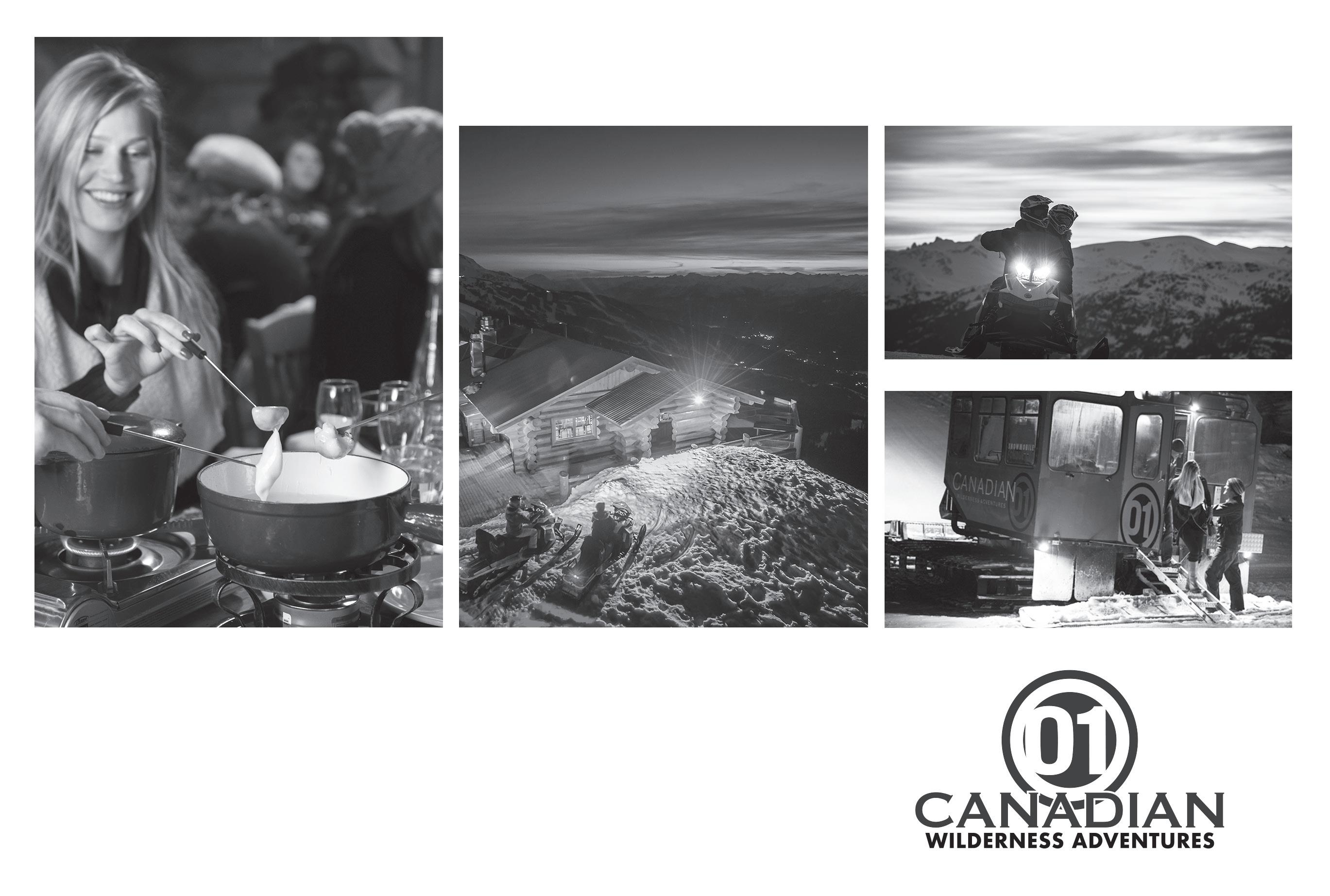
The greater concern about this massive backlog—reportedly caused by an influx of tests after COVID, and, like everything else, a worker shortage—is for people with abnormal tests.
a year to get results, booking a follow-up to get screened again at six months isn’t going to work out.
To drive home this point, I asked one of those three British Columbians I know for their pap timeline.
In July 2021, a few weeks after the test,
Second, according to an article from Global News, since October 2022, the Cervical Cancer Screening Laboratory has started using “an additional alternative cervical cancer collection method” that aims to return test results to the pre-COVID standard of 20 days.
All this isn’t to encourage you to postpone your pap until the situation is sorted. In fact, the opposite is true. Go check when you had your last test, get yourself to a doctor, and start your (possibly very long) wait now. It just might save your life. ■
NOEL
The problem is for many with abnormal cells, the first step can be to get tested again six months later. I’m not very good at math, but if people are routinely waiting at least half a year to get results, booking a followup to get screened again at six months isn’t going to work out.
ENJOY RAINBOW PARK while you can because the popular lakeside spot will close to the public as it undergoes significant upgrades this year, starting in the spring.
The upgrades, slated for the area between the railway and the Alta Lake shoreline, represent the park’s most significant improvements since the Resort Municipality of Whistler (RMOW) acquired the land in the 1980s. The upgrades will help accommodate a surging number of users by improving the site’s infrastructure, accessibility and design, the municipality said.
“At this point, anticipate that the park, the lake and the Valley Trail will be closed. We know that’s a really big impact for people, and it’s disappointing, but in order to achieve construction efficiency and safety, that’s the approach that we believe needs to be undertaken at this time,” said RMOW manager of resort parks planning Martin Pardoe.
At present, it’s unclear exactly how long the closure of one of Whistler’s busiest parks will last, although a municipal spokesperson said it will likely span from this spring to the fall, or the fall until spring 2024 while the site is an active construction zone. Pardoe said the project is slated to go to tender in the next two months, and once a bid is approved, the municipality will confirm the full extent of the
closure. The construction window spans from this spring until May 2024, an effort to attract competitive project bids.
“To attract competitively priced bids in today’s construction market, we’ve allowed for a very large construction window,” Pardoe said in a presentation to Whistler council this week.
“That’s not to say that construction will take all of this window, but rather, we wish to provide prospective contractors with a large window so they can more seriously consider this project with other projects in their work program.”
The municipality said it is trying to find alternatives for “many of the park’s activities,” like the beach volleyball courts, for the summer months. The off-leash dog area, known as “Barking Bay,” will remain untouched, the RMOW said.
RMOW general manager of resort experience Jessie Gresley-Jones said closing the park, rather than keeping limited sections open while work is ongoing, would allow construction to wrap quicker.
“I think one big desire is that we close it and tackle it all at once, then we can hopefully minimize the window of construction,” Gresley-Jones said. “If we try to work around the edges and keep portions open, it can potentially extend the disruption. So, we want to tackle it, shorten that window and get it done right.”
The planned closure follows an explosion in use at Whistler’s parks. Fuelled by the pandemic, 2021 was the busiest year on record for resort parks, with Rainbow, Lost Lake, Lakeside and Alpha Lake parks visited an estimated 176,000 times, 35 per cent more
than in 2020 and an astounding 77 per cent more than 2019.
Plans for Rainnbow Park’s redevelopment are extensive and include: expanding the existing beach area; a new dock equipped with a hammock, stand-up paddleboard launch and accessible lift; improvements to the north dock, including a paved path and accessible lift; widening sections of the Valley Trail; expanded and improved gathering places, picnic areas and seating; habitat improvements aimed at supporting the area’s ecosystem; and a dedicated food truck plaza.
“We have to make best use of the parks we have, and so this space needs to be able to do as much as possible and be robust and resilient for dramatically changing weather, increased crowds, and overall changing environment,” Gresley-Jones said.
The Valley Trail will be realigned and widened by a metre throughout the park to reduce congestion. The path will move east around the volleyball courts and extend alongside the beach, functioning as a waterfront promenade, connecting in a loop to the new food truck plaza near the park’s main entrance.
“We wanted to make this a little more of a clear, definitive area and easier for food trucks to move in and people to come across. So there’s a little bit of a plaza space that we are creating there to meet that higher demand and create a little bit more safety and separation from the Valley Trail,” Pardoe said.
The beach will expand to reduce erosion and debris accumulation and add an assortment
of seating options, such as log seating. Another dock toward the south end of the beach will be built, along with accessibility improvements to the existing north beach dock.

“What we really seek to do is to create more three-dimensional and better experiences, more places for people to experience the park and distribute people amongst all the areas of the park that are currently not that well used,” Pardoe said.
The irrigation and septic systems will be replaced, with the park’s irrigation converting to non-potable water and the septic system decommissioned and connected to the municipality’s sewer system, removing the need for manual waste removal.
The RMOW estimates the current cost for these upgrades at $4.6 million, with 100 per cent of the price tag covered by provincial Resort Municipality Initiative funds. The municipality spent a portion of this fund on the first phase of improvements that focused on upgrading the park’s parking lot.
Whistler Mayor Jack Crompton welcomed the redevelopment project, highlighting it as a significant step in helping the municipality achieve its strategic planning goals related to tourism.
“One of the ways that we engage in smart tourism is ensuring that the infrastructure we have that hosts tourism is robust and it can deal well with visitation,” he said.
“Obviously, this is work that was ongoing, but it does exactly that. It allows us to respond to increased visitation to parks, and that’s a really big deal for this community; a community of 14,000 people that sees 3 million-plus visitors a year needs to be really intentional and thoughtful about that tourism infrastructure.” n
OVER THE RAINBOW An artist’s rendering of planned upgrades to Rainbow Park.Enjoy 5 weeks a year in Whistler in your own 3 bedroom slope side home in At Natures Door. This ski in out residence offers swimming pool, hot tubs, gym and owners lodge. Book your viewing today.
 BY MEGAN LALONDE
BY MEGAN LALONDE
NEWLY RELEASED RESULTS of a 2022 corridor-wide anti-racism survey by the Whistler Multicultural Society (WMS) are shedding light on just how pervasive racism and discrimination are, even in the most idealistic of resort communities.
Statistics show 11.3 per cent of all respondents reported feeling unsafe in the community where they live because of their race, while 39 per cent of respondents said they have experienced racism while living in the Sea to Sky.
The survey defined racism as “unfair or harmful assumptions, beliefs, actions, behaviours, policies and/or practices that target[ed] and/or disadvantage[d]” respondents based on their race, ethnicity or status as a person of colour.

Seventy-two per cent of non-white respondents said they had been subject to racism, bias and discrimination in the Sea to Sky, while every respondent who identified as Black and 94 per cent of Indigenous participants answered “yes” when asked if they had experienced racism.

Though 78 per cent of respondents who said they have not personally experienced racism would be willing to report an incident, just 43 per cent of people who have said they would be willing to do so.

More than 61 per cent of survey respondents


stated their racial identify as white, with 10.6 per cent self-identifying as Indigenous; 9.4 per cent as a person of colour; 8.9 per cent as “other,” 7.8 per cent as mixed race and 1.7 per cent as Black or of African descent.
Most survey respondents (43.5 per cent) lived in in Whistler, with Squamish residents accounting for 37 per cent. The remainder of respondents said they lived in Pemberton, Mount Currie, or D’Arcy.

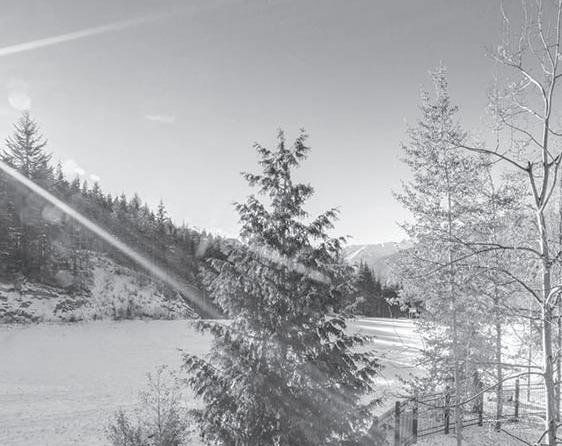
Of those individuals that reported experiencing racism within the corridor, more than half said they had encountered “multiple forms” in most social and civic environments, including verbal racism, such as comments or micro-aggressions; institutional racism that manifests in discrimination at school or in the workplace; non-verbal racism such as racist gestures or avoidance; virtual racism, such as social media posts or racially-based online bullying; and physical racism, such as assault or spitting.

From the society’s perspective, those results fall along the lines of what stakeholders expected to see, said Kira Grachev, a community outreach coordinator with the WMS.
“I feel that maybe certain ... segments of Whistler will be surprised at these results, but I think when it comes to people who work at WMS, this is expected,” she said.“Just because it’s a small town doesn’t mean there isn’t racism, and just because it’s less overt, doesn’t mean that it’s not happening. It happens in very insidious ways as well.”
The anonymous study on racism, bias, and discrimination was funded through WMS’ partnership with the Resilience B.C. Anti-Racism Network and conducted
Nearly three-quarters of non-white residents report experiencing racismHARSH TRUTH Institutional racism, such as race-based discrimination in the workplace, is one of several forms of racism Sea to Sky locals have reportedly experienced within the corridor.
throughout the first few months of 2022. The 10-question online survey was disseminated through social media channels, emails to local businesses and community members, and through QR codes that appeared on printed posters. The survey garnered 180 responses. Results were made public on Monday, Jan. 23.
“We all interpret data through our own experiences,” said Grachev. “That’s kind of the … middle goal with getting this out there: we want the community to interpret the data, not just someone like me.”



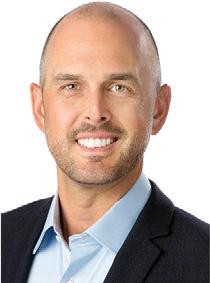
The survey’s final question offered participants the opportunity to share their thoughts outside of the multiple-choice format. A handful of those responses read as follows:
“Police are best called on for anti-hate crimes, but it is all citizenry who need to be educated/react to acts of racism, which can happen on a very subtle level. So I’m sort of assuming you’re referencing overt, hateful acts of racism for this survey, but it’s more complex than that.”
“Whistler Secondary is in crisis. Reported incidents of student-to-student racism are not communicated to teachers... If they are reported to admin, that’s where it ends. There is a fear that the pervasive racism and violent incidents related to race will ‘hit the headlines’ so everything is done


to protect the identities of all youth involved and in so doing the staff isn’t informed, the issues are not addressed and the staff end up looking complicit.”
“Being Indigenous, trying to live a good life, there are so many hurdles of underlying and obvious racism. If that’s something I have to deal with on an ongoing basis, so should those who inflict racism—not have racism cast in them, but to learn to change their behaviour. Society has to change, too.”

“I’m sick of the lack of diversity in Whistler. There are no black or brown teachers or [principals]. We just need to start hiring and centring more people of colour. I hope this survey wasn’t just a bunch of white people with good intentions that created it, for instance. That’s what the science says is what works, not diversity training and antiracism training, although I think those are a good start.”
“As an educated Indigenous woman, I have found myself in a position of always having to teach, to share my trauma and the pain of my people to educate and support white people in their learning. It’s time they took more and better steps to do this learning themselves. The answer is not to get more Indigenous people to train as (diversity, equity and inclusion) experts; the answer is to get white institutions and corporations to make meaningful changes to break down the systems of oppression.”
“I believe there is a lot of performative action being taken and not as much actual systemic reform. Lots of white people in this town do not believe that racism exists and it

should be talked about way more and ACTED on in the way of systemic reform.”

“Crimes should be reported to the police and then they should be involved but a lot of this involves changing the culture. In some cases, involving police may be counterproductive or too much. For example, something happens at an elementary school during recess break—[that] may be best handled by discussing why it was wrong at the school.”
“Systemic racism needs to be resolved ASAP. It teaches us every day that different people have different rights. And Whistler is not immune to systemic racism, in fact, I think it’s prevalent and widely accepted.”




The ultimate aim of the study, explained Grachev, was to identify and challenge racism within the community, with the related goal of informing of new set of guidelines that could support both individuals and service providers in the wake of racist incidents.
“Another thing that we noticed in the survey results was that a lot of people said they didn’t really know what to do with their experiences—like they had them, they experienced [racism], and then they weren’t sure whether they should tell the police. There is no kind of formal protocol,” she said.
“Again, this is preliminary because we’re going to go where the community decides—



and it’s not a homogenous group either—but one of the ideas right now is to kind of develop a protocol … for supporting people when they experience racism in Whistler.”
A protocol “would be a good starting point” in tackling racism on a local level, Grachev continued, so “people feel that they have a safe space where they’re supported to go to, and that there’s going to be some kind of outcome—that it’s not like their experiences or their traumas are just being held in suspense, that they are actually able to see some sort of change and have this kind of agency when they’re experiencing something that’s obviously degrading.”
In the coming weeks, WMS plans to host a series of small, informal group discussions with respondents and community stakeholders about survey results and what this protocol could look like. Those interested in participating can email info@wmsociety.ca for more information.
“Because we’re such a small group, we’re trying to focus right now just on Whistler, with the intention of eventually [expanding] into different areas,” Grachev added. “Also, because the demographic of Whistler and Pemberton and Squamish are all so different … and we want to do it in a very delicate and respectful way, I think we’re trying to not bite off more than we can chew, and just see where the community takes us with this.
“If [the focus groups are] successful … and people feel that they’re being supported, then we’ll probably go into Squamish and Pemberton as well.” n




WHEN WHISTLER Blackcomb’s (WB) popular Fire & Ice show returned for the first time in two years on Dec. 31, there was at least one major component from past shows that was noticeably absent. For the first time in nearly two decades, the crew of fire dancers that would normally light up the night sky over Skier’s Plaza every Sunday were nowhere to be found, part of a larger reimagining of the performance that had been on a COVID-fuelled hiatus since the 2020/21 winter.
“We are really sad that we are not a part of something that we were a part of forever,” said Linda Brown, who had been involved with the show since its inception 18 years ago, including as lead coach of the fire dancing crew since the mid-Aughts.
For its part, WB said in a statement it was taking a “reconceptualized approach” to Fire & Ice in 2023 that comes with a “focus on connecting storytelling of the event to the local community and its heritage,” including incorporating Indigenous elements from the local Squamish and Lil’wat Nations.

“It is crucial that we reiterate the importance of our new approach to this event, especially as it returns from its two-year hiatus,” the statement continued. “We spend countless hours and have had so many important
conversations about how to connect Fire & Ice back to our community—to tell its stories in a way that highlights local artists and connects to our heritage and history of the people who shaped this land.”
Although disappointed to be left off the program this winter, Brown stressed to Pique it was more so the lack of communication and poor timing from WB that left a sour taste in her and other dancers’ mouths. Brown said when a November post to a private Facebook group for Fire & Ice performers confirmed the show was indeed moving forward this winter, she operated under the assumption the fire dancers would be included, as they have been for years.
Brown also took the step of emailing WB’s events department, which had taken over the show from snow school, to notify organizers of the troupe’s plans. They got nothing in response.
(Pique reviewed two different email threads, which appeared to show no reply from WB.)
“We were pretty excited about it starting up again this year, but I felt a very strange energy about it from the get-go because I couldn’t get anyone to respond,” Brown relayed.
WB maintained the fire dancers were never confirmed as part of Fire & Ice, and that once a decision was made in November on the new direction of the show, the company said in its statement it “immediately took steps” to notify the relevant parties, including the dancers. “We attempted to reach this group
through their primary contact; however, despite repeated attempts, were unable to do so until mid-December.”
In response, Brown said someone from the events department called her twice, and didn’t leave a message either time. On the second instance, she claimed she called back multiple times minutes later, to no answer, after weeks of getting no response to her emails.
“Obviously, they knew long before that that they weren’t going to use the fire dancers, and [they] could’ve responded at the very first email I sent,” Brown added.

By that point, however, auditions had already been held, dancers had been hired, music had been selected, and choreography had been arranged. The dancers were also banking on the season’s ski pass they were historically offered every year, along with hourly pay, for being a part of the show. One dancer Pique spoke with even purchased her ski pass upfront, before the sales cut-off date, under the belief WB would reimburse her later.
“They didn’t tell us that they weren’t having us until after you couldn’t buy a season’s pass anymore,” said long-time fire dancer Holly Jewkes. “Obviously we are going to assume we’re part of the show; we’ve always been part of the show.”
In response, WB said it never offered “any indication that fire dancing would be part of the reimagined approach to Fire & Ice, nor did we provide any indication to hire
staff, choreograph performances, or purchase passes. This process happened without our knowledge and without a contract in place.”
Eventually, in mid-December, just two weeks before the first performance of the season, Brown said she got a 90-second phone call from a WB events staffer confirming the dancers weren’t involved. She believes the poor communication was another example in a long line of WB lacking “that personal touch” under the Vail Resorts banner.
“That was my 18 years out the door,” Brown said. “It felt like a slap in the face.”
Part of the issue, Brown posited, was transitioning from being a big fish in a small pond at ski school, to being one of a multitude of events organized by WB’s event department.
“I think the transfer of departments is a big part of it,” she said. “We went from being part of ski school for 20 years to being part of an events department where it was not a big deal.”
Concluding its statement, WB reiterated that timely communication is “very important to us” and recognized the dancers’ longstanding contributions to the show.
“We understand the fire dancers felt we were delayed in our confirmation of their inclusion and do truly appreciate everything they have contributed to Fire & Ice over the years,” it read.
Fire & Ice is scheduled for Skier’s Plaza every Sunday through March 12. The show starts at 7 p.m. n
LIFE IS ABOUT TO GET more expensive for business owners in Function Junction thanks to updated assessments that showed the value of properties in the neighbourhood have soared to new highs.
While the median assessed value of singlefamily homes in Whistler rose by 11 per cent last year, commercial and industrial properties experienced the largest overall increase in the municipality. According to BC Assessment, light industrial properties in Whistler rose in value 115.4 per cent, while commercial properties increased by 29.5 per cent.

Released annually every January, the assessed property values reflect the market rate as of July 1 the previous year, and in the case of commercial buildings, also factors in the parcel’s earning potential. Assessments are used to help determine annual property tax rates, which change relative to the average change in a given community and property class.
The hikes in value were understandably most pronounced in Whistler’s industrial neighbourhood, Function Junction, where at least one property owner saw their assessment more than sextuple last year.

Take 1410 Alpha Lake Road, a multi-storey, 47,439-square-foot commercial building equipped with 91 underground parking stalls and similar-sized warehouse and office space. The property rose in assessed value by nearly $22 million last year, from $10,503,000 to $32,476,000, a 209-per-cent jump.
This upsurge is an issue for dozens of properties in the neighbourhood, such as 1200 Alpha Lake Rd., which rose 163 per cent in value, from $6 million to nearly $16 million; 1208 Alpha Lake Rd. (from $2 million to $5.8 million); 1310 Alpha Lake Rd. (from $2.9 million to $8.9 million); and 1110 Millar Creek Rd, which rose by a whopping 606 per cent, from $451,000 to $2.7 million.
Dave Brown, local realtor with the Whistler Real Estate Co., said the surge in value and higher tax rate that will likely go with it will hit property owners with triple net leases the hardest.
“I think everyone that is an observer and has concerns about the sense of community knows that businesses and retail are struggling in every way, shape or form on a cost basis,” he said. “The last thing they need in the context of their survival and wellbeing is an increase that is put on them by a government body’s assessment because of the download.
The tax implications for local businesses are still in the air, as property owners have until the end of the month to challenge their assessment. If these increased property values stick, this could mean significantly higher taxes for landlords and potentially increased lease rates for tenants.
“If you compare what’s happened in Function Junction to what’s happened overall,
you would have to say that, area-wide, there have been significant increases, but there’s nothing like Function Junction,” Brown said.
“To be honest, we can deal with 20- to 30-per-cent increases, knowing that they’ll probably flatten out next year. They’re in a range of reasonability or unreasonability, let’s put it that way, but they’re manageable. However, 60 to 300 per cent is just not manageable.”
According to assessor Bryan Murao with BC Assessment, the recent sales history in Function Junction is consistent and robust enough that atypical increases are necessary to ensure the properties align with market trends.

“My best understanding is that Function Junction has evolved quite a bit over the past decade. It’s increased a lot in trendiness, and that can often lead to corresponding increases in the market value for its local real estate. This trend looks to have been clearly visible in the recent sales history there,” Murao said in an email.
Doug Treleaven, realtor with RE/MAX Sea to Sky, believes the assessed values are out of step with the sales history of the neighbourhood, which saw only a handful of transactions in 2022.
“There’s nothing really big that has changed hands in Whistler like 1410 [Alpha Lake Rd.] or 1200 {Alpha Lake Rd]. That’s the problem,” he said. “They’re going from a very small comparable analysis that has residential components to it, and they’re coming up with this number which has floored everybody and taken everybody by surprise.”
The realtor went on to say that, with its growing number of restaurants, bars and cafés, Function “is getting a bit of a skip to its step that it’s never had before, and to have Victoria come out and say, ‘You guys have had enough fun. We’re just going to go and hammer the hell out of ya,’ well, it’s crazy. Especially to do it in one shot.”
Owners who believe their assessment is inaccurate can submit a Notice of Complaint appeal by Jan. 31 for an independent review by a Property Assessment Review Panel—but are advised to contact a realtor for guidance before taking that step. n

m l o c a l r e s t a u r a n t s i n c l u d i n g P o r t o b e l l o , B e a r f o o t B i s t r o , C a r a




a / Q u a t t r o , S i d e c u t a n d m o r e

ON JAN. 11, Hassan Al Kontar officially became Canada’s newest citizen, but the process of becoming Canadian began long before that for the Syrian refugee.
“I considered myself a Canadian a long time before the ceremony,” said the 41-year-old. “I consider myself a Canadian since Day 1. I was Canadian since I shovelled snow the first time in Whistler, or from the day I learned how to ski, or when I saw a black bear on top of my roof.”
Al Kontar made international headlines in 2018 after he was stranded, a man without a country, in a Malaysian airport for months on end. Refusing compulsory military service in his native Syria, Al Kontar’s odyssey began in 2011, when the insurance marketing manager lost his work permit from the United Arab Emirates after a devastating civil war broke out that continues in Syria to this day. It left him scrambling to find a country that would issue him a visa so he would not have to return to his war-torn homeland. For years, he slept in his car or hid out in parks.
Then, in March 2018, he was turned away from a Turkish Airlines flight, causing his threemonth Malaysian work permit to expire and
leaving him stranded in the Kuala Lumpur International Airport. It was there that he began documenting his travails on social media, with both pathos and humour, captivating a global audience that seemed to resonate with his story and its shades of the 2004 Tom Hanks film, Terminal. He would later spend several months in a Malaysian detention centre after authorities there arrested him inside the airport and threatened him daily with deportation, which would likely have meant certain death for a Syrian who is a vocal critic of Bashar al-Assad’s brutal autocratic regime.
From there, Al Kontar caught the attention of former Whistlerite Laurie Cooper, founder of Canada Caring, a non-profit dedicated to placing volunteers in refugee camps, who was inspired to help bring the Syrian refugee to Canada. Cooper, along with a group of fellow Whistlerites, organized a letter-writing and fundraising campaign, which convinced an Ontario refugee lawyer to donate his services pro bono, and the BC Muslim Association to offer one of its sponsorship spots.
“I am very, very happy for him and I think he will enrich Canada and that will reflect positively on the refugees to Canada,” said Shawkat Hasan, director of the BC Muslim Association’s refugee sponsorship program.
Cooper, who now lives in Smithers and
works as a refugee immigration consultant, said she felt like she gained another son the moment Al Kontar arrived in Canada.
“I remember someone asked me how I felt about him arriving and I said I felt like my son had come home,” she said. “I say that with great respect for Hassan’s mom, because I’m not his real mom, but I’m grateful I’ve had the opportunity to be in a certain kind of maternal role for him and others that have arrived because many have not seen their mothers for years and years.”
That is due to change soon, however. With a passport in hand, Al Kontar is hopeful to travel to Egypt, where his family now resides, a trip that is a decade-and-a-half in the making.
“I think it will be amazing. It will be a dream come true, but it comes with a cost because we missed 15 years,” he said, adding that his eventual goal is to bring his family to Canada. “We will try to make up for all the lost years.”
Al Kontar has kept busy since landing in Whistler (he now lives in Vancouver) nearly five years ago. A fierce advocate for refugees around the globe, he’s a regular on the speaking tour circuit, released his debut memoir, Man at the Airport: How Social Media Saved My Life, last year, and joined the Canadian Red Cross Emergency Disaster & Response Team, which brought him to COVID-19 vaccine clinics from Vancouver to Fort St. John. Forty-eight online

courses later, and he is now a case manager on the Red Cross flood recovery team, overseeing remediation activity in Princeton.
“I can easily claim I’ve seen more of B.C. than most people from British Columbia,” he said.
Al Kontar’s tireless work ethic is driven in part by a promise he made to a CBC journalist on his first day in Canada back in 2018.
“I was speaking to the Canadian people that I will prove them right for the opportunity they gave me, that I’m going to respect the laws here, the ways of life, embrace the diversity and give back to the community,” he explained.
The Syrian-Canadian has by now more than earned the right to call himself a citizen, but he is not likely to forget the toll it took on him to get here.
“It is bittersweet because it cost me a lot to get to this moment,” he said. “It cost me 15 years separation from my family. A niece and nephew I don’t know. It cost me a father. I wasn’t there when he passed away to say goodbye. It cost me my country, a destroyed country. It cost me jail, interrogations—hundreds of them. Detention. Sleeping on the floor of the airport. Being subject to racism and discrimination. It cost me a lot— but I still consider myself one of the luckiest.”
Al Kontar’s book is available for sale at tidewaterpress.ca/man-at-the-airport. n
The Resort Municipality of Whistler (RMOW) will be accepting Community Enrichment Program (CEP) applications from community groups looking for financial assistance for 2023 The application period runs from January 25 to February 15, 2023.
Each interested community group is required to complete a Grant Application Form and present to Council at a Committee of the Whole Meeting on March 7, 2023 All approved funding will be issued no later than April 30, 2023

Grant Application Forms are available at www.whistler.ca/cep or at the reception desk of the Whistler Municipal Hall, Monday to Friday, from 8 a.m. to 4:30 p.m.

Please submit applications to: Legislative Services Department, RMOW, 4325 Blackcomb Way Whistler, BC V8E 0X5

IF THERE WAS ONE crucial message to come out of the Resort Municipality of Whistler’s (RMOW) 2023 budget process, it was this: The municipality is in dire need of more revenue to keep pace with recordhigh inflation.

While the RMOW plans to raise property taxes by 8.4 per cent this year, the budget also highlighted the need for the municipality to find other alternative income sources. One significant potential source is corporate sponsorships and advertising on municipal assets.
On Jan. 10, Whistler’s mayor and council received a recommendation report to develop a Sponsorship Strategy and Plan that will assess the value of Whistler’s assets and establish revenue targets, sales and service strategies with the long-term goal of bringing more money into municipal coffers.
“We’re doing this to explore alternative revenue opportunities. We’re re-examining sponsorship as a potential source of incremental revenue,” said RMOW manager of
cultural planning and development John Rae.
“As guided by the [Official Community Plan], we have a fiscal duty to examine alternative sources of revenue and therefore reduce reliance on property tax; one of those is sponsorship,” Rae said. “We have a sponsorship policy adopted in October 2014, and the recommendations in this report are to re-activate the RMOW’s pursuit of sponsorship.”
This isn’t the RMOW’s first exploration into naming rights. A pilot project launched in 2014 through the Festivals, Events & Animation program offered corporations naming rights to the annual Whistler Present concert series and street entertainment offerings, but was ultimately scrapped after the RMOW received no qualified proposals, with businesses indicating they were more interested in the naming rights of capital assets than seasonal programs.
Following the pilot, the push to sell naming rights grew less urgent as Resort Municipality Initiative and Municipal and Regional District Tax funds increased significantly in the subsequent years.
In 2013, the RMOW commissioned a report through UNITE Partnerships Inc. that valued
the RMOW’s total available sponsorship assets at $6.9 million. This potential income will be reassessed by UNITE, as the number of assets and tourists to the resort have increased over the past decade.
Some of the RMOW’s assets that could receive corporate sponsorships—and ultimately be renamed—include buildings and infrastructure, such as the Meadow Park Sports Centre, Whistler Skate Park, and Olympic Plaza.
The report to the council also noted sponsors may be interested in a tiered system that could be divided between different levels and come with various perks, such as integrating the sponsor’s brand into a program’s title.
Generally, council agreed that finding alternative forms of revenue is a good move for the RMOW. However, councillors noted the RMOW must choose its sponsorship partners and the capital assets that could be renamed carefully.
“I think this is a great opportunity to realize some non-tax revenue for our venues and for programs that may otherwise not be able to be viable, and so I think that this is a huge opportunity,” Councillor Jen Ford said.
“I think that the sensitivity with which we approach these sponsors or consider the sponsors approaching us and the types of relationships that we build through this is really important and under a lot of scrutiny from our community and outside communities.”
Rae also noted that the new strategy would make a point of working with staff at the Lil’wat and Squamish Nations, as well as with the Squamish Lil’wat Cultural Centre, to identify ways the sponsorship strategy may open up new opportunities for collaboration and reconciliation.
More than $1.4 billion was spent on sponsorships in 2021 in Canada, down significantly from $3 billion in 2019, but more than the the $1 billion spent in 2020. Sixty-three per cent of that amount went to pro and amateur sports in 2021, with the remainder going toward festivals, attractions and cultural programs.
Staff will bring a detailed sponsorship strategy plan and report to the council in the next four to six months. If a plan is approved by Aug. 1, the 2024 draft budget will include incremental revenue from sponsorships, staff said. n

MANY DOG OWNERS can relate to the struggle of trying to wrangle their pet through the door when that pup just doesn’t want their walk outside to end.

That hasn’t been the case for Jared Riseborough and his 11-month-old St. Bernard, Gunner. Though the former farm dog is still getting used to life indoors, said Riseborough, “he definitely prefers inside over outside right now.”
Gunner seemingly had his fill of the great outdoors last month, when he spent a full three weeks on a cross-town adventure that took him from Creekside to Emerald and even, reportedly, all the way to Harmony bowl on Whistler Mountain.
Gunner bolted away from his Sarajevo Drive home on Dec. 9, just two days after Riseborough and his family adopted the timid St. Bernard from Chilliwack.

“At first, I was like, ‘Well, he probably won’t go that far. He’s pretty scared of most things right now, so it’ll be fine,’” said Riseborough. “Initially I left work to go find him and I did actually see him and almost got him within, like, the first two hours. But trying to dive for a dog when you’re already in waistdeep snow is not easy.”
Over the following three weeks, sightings of Gunner would pour in through social media. The Sea to Sky Neighbourhood Animals Needing Assistance (NANA) Facebook group as well as Canine Valley, a Squamish-based training-centre, helped spread the word, field sighting reports and build a strategy.

“We would try and go out at least for a couple hours every day after work, usually to see if we could follow him around, which was originally just around Creekside,” said Riseborough. “And then, at some point … someone saw a St. Bernard at the bottom of the Harmony chair, so I don’t know if he went up that far, but if someone said they saw, I guess he went for quite a bit of an adventure.”
Considering St. Bernards were originally bred for rescue work high in the Swiss Alps— coupled with the fact that Gunner had been seen scrounging for food from garbage bins— Riseborough remained confident Gunner could endure the tough terrain and harsh conditions, even as the wind chill approached the -30 C mark over several days in mid-December.
“I was pretty sure we would get him back, but it was still pretty stressful and worrying, for sure,” he said. “Like, how stressful is it anytime you lose a dog even for a few hours, right? But all the sightings definitely helped to keep the mind a little at ease.”
Ultimately, rain was where the pup apparently drew the line. He was found sitting
by the back door of a home in Emerald on the morning of Dec. 30, three weeks to the day that he bolted. The homeowners let him in, gave him a snack and some water, and promptly called Riseborough.
CREEKSIDE HOME“As soon as it got rainy, he’s like, ‘Alright, I’m going to go find someone. I’m done,’” said Riseborough.










Gunner isn’t the first four-legged Whistlerite to embark on an extended adventure from their new home. Though he beat her record by a solid week, the St. Bernard’s story is reminiscent of Kali’s, a border collie rescued from northern Manitoba that had spent less than two days with new owners in Cheakamus Crossing before escaping in February 2021, capturing the community’s attention throughout her 14 days on the run.
After Kali’s safe return home, local retailer WHISLIFE designed and sold Kalibranded hoodies as part of a fundraiser that drummed up $1,200 for Whistler Animals Galore (WAG) and the Whistler Blackcomb Foundation. Riseborough and WHISLIFE owner Matt Hall are looking to capitalize on Gunner’s adventure to raise funds for WAG and to NANA once more as a thankyou from Riseborough for the their help finding Gunner. WHISLIFE currently has hoodies available for pre-sale. All proceeds will benefit WAG and NANA.
“It’s been great to have all the community support,” said Riseborough. “I grew up here since I was pretty young, so it’s nice to know the whole community is still looking out for all the dogs.” n
FIVE YEARS AGO, Conrad Murdoch was studying geography at the University of Victoria when he realized it wasn’t his calling.
“I just didn’t see myself going anywhere with it,” he said.
So, he took a year off. In his quest to figure out what to do next, he turned to a demographic already well into their careers: his parents’ friends.
“I talked to them about what they did and firefighting seemed pretty cool,” he said.
Murdoch knew becoming a paid, full-time firefighter is both a journey and commitment, but after he was hired as ski patroller on Blackcomb and met a few coworkers who also served as firefighters, the idea became more and more appealing.
“I picked away at some of the courses,” he said. “There’s a huge list of fire-related courses, as far as being able to qualify for a full-time job; the [National Fire Protection Association] 10 certification, the first responders first aid license, and at least an air brake endorsement to drive the truck. Then there are always other courses you can add to the resume.”
For his part, Murdoch ended up attending fire academy at the College of the Rockies in Kimberley. Afterward, he served as a
paid on-call firefighter, and, last November, became the first-born-and-raised Whistlerite to be hired by the Whistler Fire Rescue Service (WFRS) as a full-time firefighter.

“I think it’s super cool being in a small town,” he added. “You get to know everyone. It does feel good to give something back to the place I grew up. This town has given me so much. The least I can do is be in some sort of service role. I’d love to keep volunteering with other things too.”
Mitchell Hunter, deputy fire chief, said Murdoch is a welcome addition to the department.
“Conrad brings a wide range of industry skill and certifications to the WFRS, including his expertise of serving as ski patroller,” he wrote in an email. “In addition to his professional experience, Conrad has a deep connection and understanding of the community given his life in Whistler, which makes him an incredible asset to the department.”
While there are certainly advantages to knowing a town as intimately as Murdoch when working as a firefighter, there’s also the inevitability of helping someone you know during your career as well.
“That’s definitely something that’s on my
mind,” Murdoch said. “In bigger cities, you have a higher call volume. Here, you could know someone. It’s a small town. I’m sure at some point I’ll have to go through something like that. With training and practice, you learn to stay calm and work with your team.”
Becoming a firefighter might have given him a career path, but it also helped him find a way to stay in the home he loves.
“I hit the jackpot from Day 1 that my parents chose to move here before I was born,” he said. “I always wanted to figure out a way to stay here.”
A skier since age two, throughout his childhood Murdoch got into freesking in the winter and enduro racing in the summer.

“It was definitely a great place to grow up,” he said. “It was pretty sweet to have access to the trails and a ski hill here. I wouldn’t trade it for anything.”
For young Whistlerites looking to pursue a similar career path, Murdoch has a suggestion.
“If they’re still in high school, they should try the junior firefighting program,” he said. “It’s three or four days of hands-on experience. You get to flow water, put water on a real fire, cut up a car. They do a really good job of showing what the job is like in a condensed amount of time. If anything, I just say work hard, look into it, ask questions.”
For more on the junior firefighter program, visit whistler.ca/fire. n

LIKE SO MANY British Columbians, Pemberton families have experienced the paucity of available childcare spaces in their area and the difficulties associated with this reality. Elected representatives have responded by officially making daycare expansion a matter of primary concern.

On Jan. 24, mayor and council heard a brief presentation from CAO Elizabeth Tracy that formally introduced the Village of Pemberton’s (VOP) council priorities for 2023, and listed the scope and direction of future daycare expansion as a top project priority for the year to come.
In answering a question from Pique Newsmagazine , councillors emphasized the process will not be instantaneous and tentatively put forth a potential completion date of January 2024 for the much-needed initiative. Pre-load has already been placed at
a site near the Pemberton Children’s Centre (PCC), with the project team getting ready to bring in modular buildings and establish a foundation at the appropriate time.
“[Creating more childcare spaces] is one of our top priorities, and it’s one of the projects in the centre of [VOP staff’s] desk,” said Mayor Mike Richman. “We’re doing what we can to move it along.”
as planned—would increase Pemberton’s ratio of licensed childcare spaces per 100 children to 18.7. In comparison, the provincial average is 18.4. The national average is 27.2.
The money was a significant breakthrough for the Village, which had applied for funding three previous times since 2018, only to be repeatedly denied due to the project’s high cost-per-space.
Another major item on council’s priorities agenda was the recent public launch of Pemberton’s Official Community Plan (OCP) Review. VOP staff and employees of the consulting firm Urban Systems—which is playing a major role in facilitating the OCP review—continue to spread word about a community open house scheduled for March 6 via social media. A local advertising campaign is in full swing as Pembertonians are encouraged to attend the open house and have their say on the major issues facing the Village.
The council priorities report took shape after two days of intensive strategic planning undertaken in December by elected representatives and the CAO’s team to identify keystone issues for further discussion and follow-up. Four distinct areas emerged: organizational health, smart growth, the environment and emergency preparedness.
In April 2022, the VOP finally managed to secure funding for the purpose of expanding the community’s current childcare facilities. More than $2.77 million obtained through the Childcare BC New Spaces Fund has been committed to building 50 new daycare spaces in the vicinity of the PCC. These spaces are meant for kids aged three to five and—if built
Since then, more challenges have presented themselves. Richman cited inflation and supply-chain issues as major factors affecting the cost of development. He stressed that the January 2024 target date is not a sure thing at this point, and there are “still some moving parts” regarding when the new childcare facilities would be completed.
Additional objectives of interest involved advocacy and relationship building with regards to Indigenous reconciliation, regional transit and flood mitigation.
“This is sort of the tip of the iceberg in terms of prioritization,” said Tracy. “For this year, we still have work to do in developing those higher-level pillars, vision and strategy going forward. But these [council priorities] give us a start.” n
DAYCARE AWARE Pemberton officials are planning for an additional 50 childcare spaces in the community that will be located in the vicinity of the Pemberton Children’s Centre,. PHOTO BY VISUAL COMMUNICATIONS / GETTY IMAGES“[Creating more childcare spaces] is one of our top priorities, and it’s one of the projects in the centre of [VOP staff’s] desk. We’re doing what we can to move it along.”
- MIKE RICHMAN
*O f fe r a p p i e s to re g u a r p ri c e of a TELU S S m a r t H o m e S e c u ri t y ( S H S ) p a n s exc u d i n g S m a r t C a m e ra S H S p l a n s re q u i re e i th e r a 3 -ye a r o r 5 -ye a r te rm

i d e nti
e pt S m a
C a m e ra a n d S m a r t Au to m ati o n P u s p l a n s w h i c h o n y q u a f y fo r a 3 -ye a r te rm Ava a b l e to ex i s ti n g TELU S o r Ko o d o M o b i t y p o s t- p a i d c o n s u m e r c u s to m e r s w h o a re a l s o s u b s c r b e d to at l e a s t 1 TELU S
C
m e r s w i th a n a c ti ve c o n s u m e r TELU S o r Ko o d o M o b i t y p o s t- p a d a c c o u nt w l re c e ve a d i s c o u nt of $1 0/m o nth C u s to m e r s w i th a n a c t ve e g i b l e h
e
i
5/m o nth A l l S H S p a n s i n c l u d e TELU S O n l i n e S e c u ri t y (“ TO S ”) TELU S O n l n e S e c u ri t y B a s c (fo r S m a r t C a m e ra a n d S m a r t Au to m at o n P u s p l a n s) o r TELU S O n n e S e c u ri t y S t a n d a rd (fo r S e c u re a n d C o ntro ) D s c o u nt s a re a p p l i e d o n th e S H S p l a n a n d TELU S re s e r ve s th e r g ht to re m ove m o b i l i t y o r h o m e s o l u t o n s d s c o u nt s i f th e c u s to m e r n o l o n g e r m e et s e l g b l i t y re q u i re m e nt s C u rre nt re g u a r p ri c n g c a n b e v i ewe d at te l u s c o m / h o m e s e c u ri t y O f fe r s a n d re g u a r p ri c i n g s u b e c t to c h a n g e w i th o u t n oti c e M i n m u m s y s te m re q u re m e nt s a p p l y Eq u i p m e nt m ay n ot b e a s s h ow n Fi n a l e l i g i b i t y fo r th e s e r v c e s w b e d ete rm i n e d by a l c e n s e d a n d c e r ti fi e d TELU S te c h n i c i a n A c a n c e at o n fe e a p p l i e s fo r e a r y te rm n ati o n of th e 3 -ye a r o r 5 -ye a r s e r v i c e a g re e m e nt e q u a to $1 0/ m o nth fo r th e S m a r t C a m e ra a n d S m a r t Au to m ati o n Pl u s p a n s , a n d $ 35/m o nth fo r th e S e c u re a n d C o ntro p l a n s , m u ti p l i e d by th e n u m b e r of m o nth s re m a i n n g i n th e s e r v i c e a g re e m e nt (w i th a p a r t a l m o nth c o u nti n g a s a fu l l m o nth), p l u s a p p l c a b e t a xe s R e nt a l e q u i p m e nt m u s t b e retu rn e d i n g o o d c o n d i t o n u p o n c a n c e l at o n of s e r v i c e oth e r w s e th e re p l a c e m e nt c o s t w i l b e c h a rg e d to th e a c c o u nt Profe s s i o n a l n s t a l l ati o n fe e of $150 a p p e s fo r a l l p rofe s s o n a y i n s t a l e d p l a n s a n d c u s to m e r s w h o s u b s c r b e to 1 o r m o re of th e fo l ow i n g s e r v i c e s p o s t- p a i d TELU S M o b i l i t y S m a r t H u b o r H i g h S p e e d I nte rn et Th e p rofe s s i o n a l i n s t a l l ati o n fe e fo r a l l oth e r c u s to m e r s i s $ 4 50 Ad d ti o n a l i n s t a l l ati o n fe e s m ay a p p l y fo r ex tra e q u i p m e nt A $1 0 0 k t fe e i s c h a rg e d o n s e lf- i n s t a l l o rd e r s a n d i s 1 0 0 % refu n d a b l e w h e n s e r v i c e i s a c t vate d w i th i n 3 0 d ay s of o rd e r Th i s i n c l u d e s i n s t a l l ati o n of a u to m at o n a n d s e c u r t y d ev i c e s a p p n s t a at o n a n d a wa l k-te s t w h e re re q u re d O n c e yo u r s e r v i c e s a c ti vate d yo u w i l b e n ot fi e d by e m a i l w i th i n 5 b u s i n e s s d ay s th at th e k i t fe e h a s b e e n a u to m ati c a l l y refu n d e d to yo u r b O f fe r ex p i re s J a n u a r y 15 2023 TO S Le g a Te rm s A l S H S p l a n s i n c l u d e TELU S O n l i n e S e c u r t y (“ TO S ”): TELU S O n l i n e S e c u r t y B a s i c (fo r S m a r t C a m e ra a n d S m a r t Au to m at o n P u s p a n s) o r TELU S O n i n e S e c u ri t y S t a n d a rd (fo r S e c u re a n d C o ntro ) N o o n e c a n p reve nt a l l cy b e rc ri m e o r d e nt t y th ef t Ac t vati o n th ro u g h N o r to n Li fe Lo c k s re q u re d N ot a p ro d u c t s s e r v i c e s a n d fe atu re s a re ava i l a b e o n a l d ev i c e s o r o p e rat n g s y s te m s S y s te m re q u i re m e nt i nfo rm at o n o n N o r to n c o m

















































































































































It’s no secret opposites attract. With Valentine’s Day just around the corner, Pique wants to hear about your unconventional Whistler love story. Are you an artistic soul with a fear of heights and two left feet who somehow fell in love with a professional adrenaline junkie? Do you spend your summers ripping through the bike park while your partner prefers to keep their bike wheels fi rmly planted on the Valley Trail? Are you a trendsetter who deals with the fact that the love of your life always wears that same grey t-shirt they got for free a few years ago?










Package No. 1
When Harry met Sally
• Blue Highways: $100 Gift card
• Nita Lake: Dinner for two at The Den ($200 value)
• Whistler Bungee: Passes for two
• Whistler Home Hardware: Fondue set
• Get the Goods: $100 Gift card

• Rimrock: $125 Gift card


• Canadian Wilderness Adventures: Snowshoe tour for two
• The Spa at Whistler: $75 Gift card

• Quattro: $100 Gift card
• Caramba: $100 Gift card





































































































































































































• Whistler Oracle: $75 Gift card

• Rocky Mountain Chocolates: Gift basket
• BuyLow Nesters: $100 Gift card
• Ziptrek: Eagle tour for two
$125 GIFT CARD (604) 932-5565 rimrockcafe.com
SNOWSHOE TOUR FOR TWO (604) 938-1616 canadianwilderness.com
EAGLE TOUR FOR TWO (604) 935-0001 ziptrek.com
$100 GIFT CARD (604) 935-7878 getthegoods.ca
TWO JUMP PASSES (604) 938-9333 whistlerbungee.com
$100 GIFT CARD (604) 938-1879 carambarestaurant.com
$100 GIFT CARD (604) 905-4844 quattrorestaurants.com
DINNER FOR TWO (604) 966-5700 nitalakelodge.com
$100 GIFT CARD (604) 932-3545 nestersmarket.com/whistler
FONDUE SET (604) 932-1903 homehardware.ca
$100 GIFT CARD (604) 938-0777 bluehighways.ca

GIFT BASKET (604) 932-4100 rockychoc.com
$75 GIFT CARD (604) 905-0084 oraclewhistler.com
$75 GIFT CARD AT THE SPA AT WHISTLER (604) 283-7685 gibbonswhistler.com/spa



























AS A CANADIAN SCIENCE WRITER with a penchant for herpetology (the study of reptiles and amphibians), the most frequent question I get this time of year is, What do these critters do in winter? Good question and, being reasonably well-versed in Hibernation 101 (never mind that what reptiles do is technically not hibernation but a state of torpor called brumation), I fill them in. One thing I don’t often mention, however, is how studying this can help save some endangered species—like turtles. The other day, when someone asked about the brumal disposition
BY LESLIE ANTHONYof the (invasive) red-eared slider that lives in Alice Lake, north of Squamish, I said I didn’t know, but told them about the work of some Ontario friends.
One cold Boxing Day a few years back, then-graduate-students James Baxter-Gilbert and Julia Riley drove to a remote corner of Algonquin Park. Baxter-Gilbert donned an orange emergency flotation suit—the kind you find on fishing boats—attached a rope to himself, tied himself to a tree, and walked out on a frozen bay. Riley watched as he promptly fell through up to his waist. “You OK?” she called. “Yeah,” he replied, clawing his way back onto solid ice only to fall through again 10 steps later. The comic leitmotif repeated as Baxter-Gilbert alternately cut holes in the ice with an auger and his own weight.
When it comes to turtle conservation in the Great White North, most who research these familiar log-lounging icons of summer eventually find themselves scouting their subjects through a blanket of snow and ice.
“You can’t say you’re a Canadian herpetologist until you’ve done winter work,” Riley—now Dr. Riley—once told me.
The outing—where they’d measured dissolved oxygen at overwintering sites—was no anomaly. Between them, the two speciesat-risk researchers have worked on seven of Canada’s eight native freshwater turtle species. Each project involved tracking turtles via radio telemetry, and most included winter work. “We’re at the northern limits for most of these species, so time spent overwintering represents

however, is cold comfort if it can’t quickly be applied to conservation. And, unfortunately for a group that remains virtually unchanged from when it first appeared in the fossil record 220 million years ago, it’s a race against time.
All of Canada’s turtle species show significant declines, a problem exacerbated by government foot-dragging (while declines occur in hare-like leaps and bounds, protection moves at the speed of… well, a tortoise.) The problems start with basic biology: all turtle species are long-lived, slow growing, and late to sexual maturity (10-30 years); once there, however, they enjoy a long reproductive life (up to 50 years) and low adult mortality. Ecologically, such traits balance the high number of eggs and hatchings lost to predation over a lifetime.
lactic acid in tissues). Numerous studies demonstrate how turtles select overwintering sites that minimize these threats. Thermal stability is key. “A certain depth of water and a certain configuration that maintains temperatures is required—maybe a hole or a spring,” said Litzgus. “It’s very specific.”
Knowing the preferred sites for a species at risk presents a significant conservation opportunity. Construction companies, for example, often use winter for some types of work because it’s easier to drive heavy equipment across frozen soil and wetlands. This presents more of a hazard than just accidentally crushing a snoozing turtle. “Some species choose the coldest areas of stratified water, so the biggest threat becomes changes in hydrology,” noted Litzgus. “Any alterations to water flow will change the thermal profile—which in turn can increase risk of acidosis or predation.”
With good sites at a premium, turtles usually end up overwintering with many of their buddies. The importance of such communal gatherings to springtime mating is clear, however, with a large percentage of the breeding population present in one small area, population-level effects of destroying the site or its occupants can be disastrous.
at least half their lives,” said Canada’s top turtle researcher, Dr. Jacqueline Litzgus of Sudbury’s Laurentian University. “What happens in summer with food and growth is important to fitness and breeding, but if you don’t survive winter, your fitness is zero.”
As such, turtles’ long annual nap (or not—in some cases) at the bottom of ponds, lakes and rivers has become a conservation focus. Because site choice is particular and vulnerability high during this time, impact to overwintering habitat can quickly override other considerations in the demise of a population. Such knowledge,

While this evolutionary trade-off allowed turtles to survive cataclysmic events in Earth’s history, losses cannot quickly be replaced after sudden episodes of high adult mortality. Despite their geological resilience, turtles aren’t equipped to deal with anthropogenic threats—like vehicles encountered while crossing roads to and from nesting or overwintering sites, or overharvesting for the food and pet trades. Yet far from offering a respite, winter presents its own threats.
Overwintering turtles face three major challenges: freezing, predation, and acidosis (the toxic accumulation of metabolic
Nevertheless, a lot has been discovered about what turtles are doing under the ice. Some (like painted turtles) can burrow into anoxic mud and breathe through their butts, others (like wood turtles) not so much. Some species (like the red-eared slider in Alice Lake) stay still for long periods, while others (like map turtles) appear to be comparatively active.
Figuring this out for each population means that the only thing between extirpation and conservation may be those like BaxterGilbert and Riley willing to brave the cold on turtles’ behalf—though it doesn’t always involve tying yourself to a tree.
Leslie Anthony is a biologist, writer and author of several popular books on environmental science. ■
When it comes to turtle conservation in the Great White North, most who research these familiar log-lounging icons of summer eventually find themselves scouting their subjects through a blanket of snow and ice.HEROES IN A HALF SHELL Turtles’ long annual winter naps at the bottom of ponds, lakes and rivers has become a conservation focus for researchers across Canada.
Not only did we meet our $20,000 fundraising goal, we surpassed it, raising a MASSIVE $36,884 for the animals of WAG. We could not have done it without the support of our incredible communities, near and far
















Thank you from the bottom of our hearts…


Zoe McDougall, Cathy Beahan, Janet Haynes, Matt & Helene Rodgers, Kelsey Harder, Olga Jandera, Catherine Gendron, Bradley Sinclair, Nancy Bayly, Laura Friedrich, Rachel Whittaker, Iyana Voth, Rolfe Benson LLP, Seneca Purcell, Jamie King, Danielle Trice, GSSJ McMillan Holdings, Amy Brooks, Jenn Cole, Shannon Marler, Karen Roland,
Palmer, David Illes, Christine McCaffrey, Harmony Place International Inc , Jennifer Bergeron Bisset, Gord Shellborn, Joanne

And thank you to our communities for 40 years of Rescue, Rehabilitation, Donations and Adoptions.
group of physicians and health experts is calling for Western Canada’s first new medical school in more than half a century to incorporate a model of medicine based on “planetary health.”
In November 2022, Premier David Eby announced Simon Fraser University’s Surrey campus would receive $4.9 million in start-up money to build a medical school, with the aim of accepting students by 2026.
In an open letter released recently, 20 doctors and university health experts called on the B.C. government and the university’s leadership to better train physicians to treat the root causes of illness instead of individual symptoms.


“Much of the billions of dollars of resources in B.C. is focused on treating disease. But we know it’s way more cost-effective preventing it,” said Kiffer Card, an assistant professor in SFU’s Faculty of Health Sciences and one of the letter’s signatories.
Studies have shown only between 10 and 20 per cent of a patient’s health is determined by access to a doctor, says Card, who lives in Victoria. The other 80 per cent, he says, depends on the environment a person lives in and the human relationships they are exposed to.

Planetary health takes the idea of public health—that human health matters at a population level and depends on how people interact—several steps further, so that the future health of humanity and the planet “are inextricably linked,” according The Lancet, a leading medical journal.
Tim Takaro, a practising physician and professor emeritus also from SFU’s Faculty of Health Sciences, says future threats to the health system will include pandemics, but also mass heat deaths and droughts. “Our feeling is that our doctors are not prepared for this,” he says.
Training doctors in planetary health would prepare them to improve patient health outside of the clinic at a time the World Health Organization has warned that a warming planet poses the “single biggest health threat” to humanity, proponents say.
On some fronts, the
threat to human health has already reached grim levels.
In early 2021, a group of scientists warned the planet has crossed five “planetary boundaries”— thresholds beyond which the natural functions of nature are fundamentally changed.
“There are nine broad areas that could just take out humans,” says Bruce Lanphear, a public health physician and professor in SFU’s Faculty of Health Sciences.
Biodiversity loss, greenhouse gas-driven climate change, biogeochemical flow (affected by heavy fertilizer application), land-system change (think deforestation and desertification), and toxic chemical concentrations (the latest to make the list) have all reached tipping points. Ocean acidification, the ozone layer, atmospheric aerosol loading, and access to fresh water remain below what scientists consider planetary boundaries.
But Lanphear warns every boundary is interconnected, and when one is crossed, the health of much of the planet’s living systems is put at risk.

“We get all caught up on genetics, but what is really driving diseases and death today is environmental triggers,” he says.

In the face of growing environmental threats, some B.C. physicians have already moved to change the way they practise medicine.
In the summer of 2021, wildfire smoke had blanketed Nelson for weeks. One of several patients suffering smoke exposure came in to see Dr. Kyle Merritt in his emergency department at Kootenay Lake Hospital. He picked up the patient’s chart and for the first time in his 10-year career penned the diagnosis: “climate change.”
“If we’re not looking at the underlying cause, and we’re just treating the symptoms, we’re just gonna keep falling further and further behind,” he told Glacier Media at the time.
Planetary health also overlaps with what can seem mundane but often end up as profoundly dangerous human social situations. Social isolation, for example, is a leading risk factor for seniors. If an older person is trapped in an overheated apartment or falls down the stairs without anyone around to help them, the results can be fatal, Card says, pointing to hundreds of deaths during the late June 2021 heat dome that scorched British Columbia.
It’s not just seniors that would benefit from better social and mental support. In a study published in January 2022,




















.
Award Ceremonies are scheduled to be presented 30 minutes after the completion of each race.
TIME EVENT DETAILS LIVESTREAM PRESENTED BY
FRIDAY 14:30 Opening Ceremony, Whistler Olympic Park
January 27
Livestream
SATURDAY 10:00 Cross-Country Jr Sprint Qualifying, Classic Women / Men Salomon January 28 10:45 Cross-Country Jr Sprint Qualifying, Classic Men Salomon 12:00 Cross-Country Jr Sprint Finals Women / Men Livestream Salomon
SUNDAY 10:00 Cross-Country U23 Sprint Qualifying, Classic Women Salomon January 29 10:45 Cross-Country U23 Sprint Qualifying, Classic Men Salomon 12:00 Cross-Country U23 Sprint Finals Women / Men Livestream Salomon
MONDAY 10:00 Cross-Country Jr Mass Start, Classic Women 20 km Livestream Salomon January 30 12:30 Cross-Country Jr Mass Start, Classic Men 20 km Livestream Salomon
TUESDAY 10:00 Cross-Country U23 Mass Start, Classic Women 20 km Livestream Salomon January 31 12:30 Cross-Country U23 Mass Start, Classic Men 20 km Livestream Salomon
WED. 10:00 Nordic Combined Jr Team Men Ski Jumping Livestream Tourism Slovenia February 1 14:00 Nordic Combined Jr Team Men 4 X 5km Ski Livestream Tourism Slovenia
THURSDAY 10:00 Cross-Country Jr Individual, Free Women 10 km Livestream Salomon February 2 12:00 Cross-Country Jr Individual, Free Men 10 km Livestream Jaga 12:30 Ski Jumping Jr Individual Women Ski Jumping Bn3th, Seaspan, Blackcomb Snowmobiles 15:00 Ski Jumping Jr Individual Men Ski Jumping Livestream Bn3th, Seaspan, Blackcomb Snowmobiles
FRIDAY 10:00 Cross-Country U23 Individual, Free Women 10 km Livestream Salomon February 3 11:30 Cross-Country U23 Individual, Free Men 10 km Livestream Jaga 9:45 Nordic Combined Jr Individual Gundersen Women Ski Jumping RMOW Whistler 11:30 Nordic Combined Jr Individual Gundersen Men Ski Jumping RMOW Whistler 13:30 Nordic Combined Jr Individual Gundersen Women 5 km Livestream RMOW Whistler 14:30 Nordic Combined Jr Individual Gundersen Men 10 km Livestream RMOW Whistler
SATURDAY 10:00 Cross Country Jr Mixed Relay Women/Men 4X5 km Livestream Haywood February 4 12:00 Cross Country U23 Mixed Relay Women/Men 4X5 km Livestream Haywood 12:30 Ski Jumping Jr Team Men Ski Jumping Tourism Slovenia 15:00 Ski Jumping Jr Team Women Ski Jumping Livestream Tourism Slovenia 10:30 Nordic Combined Jr Mixed Team Women/Men Ski Jumping CIBC 14:00 Nordic Combined Jr Mixed Team Women/Men (5, 2.5, 2.5, 5 km) CIBC
SUNDAY 11:00 Ski Jumping Jr Mixed Team Women/Men Ski Jumping Livestream RMOW Whistler February 5 12:30 Award and Closing Ceremony, Whistler Olympic Park Livestream
It is with great pride and excitement that I, on behalf of the Organizing Committee, welcome over 530 athletes from 37 countries, volunteers, numerous coaches and support teams, generous sponsors, government support, and spectators to the 2023 FIS Nordic Junior/ U23 World Ski Championships here at Whistler Olympic Park! Black Tusk Nordic Events Society is honoured to welcome the world for the 10-day event from January 27 to February 5, showcasing the next generation of nordic skiers. Our large team of volunteers has been hard at work to create a memorable experience for all and we can’t wait to host you.
The event will showcase the world’s top young athletes in 3 nordic disciplines: cross-country skiing, nordic combined, and ski jumping. Each of the competition days will be different, with a variety of exhilarating action to witness. The cross-country stadium will have everything from fast-paced sprints and exciting mixed team relays to long distance endurance tests. At the ski jump, watch some of the world’s most fearless athletes schuss down the ramp at up to 100 km/h and then soar through the air, mastering their flying positions. Then witness the ultimate duo: a combination of the two, nordic combined – if you can’t pick one sport, why not do both!

We look forward to providing you a memorable experience at Whistler Olympic Park, the venue of the 2010 Olympic and Paralympic Winter Games. We are thankful to have this amazing venue that allows the world to compete in Canada again, and look forward to reinvigorating the spirit and passion that the Olympics brought here.
We gratefully and respectfully acknowledge that we hold our event on the traditional, ancestral and unceded shared territory of the Skwxwú7mesh (Squamish) Nation and the LiÌwat7úl (LiÌwat) Nation.
Thank you to all for coming and we hope you enjoy the experience. All the best for your time at the event.
Sincerely, Norman Laube Chair, Black Tusk Nordic Events Society


The Junior World Championships began in 1977 and were first hosted in Sainte-Croix, Switzerland. They have been hosted twice before in Canada: 1979 in Mont-Sainte-Anne, Quebec – where our Event Ambassador, ski jumper Horst Bulau, won Canada’s first ever Gold at a nordic World Championship – and 1997 in Canmore, Alberta. We are excited to be hosting the event in British Columbia for the first time! The event now has two categories: Junior, for the top 16 to 20 year old Cross-Country Skiing, Ski Jumping and Nordic Combined athletes in the world, and the U23 category for the best 21 to 23 year olds in Cross-Country Skiing.


Our world-class venue, Whistler Olympic Park, was the nordic venue of the Vancouver 2010 Olympic and Paralympic Winter Games. Located halfway between Whistler and Squamish in the Callaghan Valley, the Park has nearly 90 kilometres of cross-country ski trails (40 kilometres of which are dog-friendly!), four ski jumps (K15, K38, K95 and K125), and a biathlon stadium. The venue will be open to the public for spectating as well as skiing and snowshoeing during the entire event. The Day Lodge will be fully open, including the rental shop and for food service. (Access is free with a season’s pass or regular cross country ski or snowshoe ticket. For spectating only, tickets are $5 and free for children under 6.)
Be sure to check out the festival marketplace, showcasing the top nordic vendors in the business, as well as our Official JWSC Store for the event.

The cross-country races will vary in length and style, from fast-paced sprints to long distance endurance tests, ending with the exciting 4 x 5km mixed team relay. The ski jumping competitions include individual & team jumps for both men and women, then closing out the 10 days with a bang with the mixed team event. The nordic combined events have it all: each athlete completes one competition jump and then skis 5km (women) or 10km (men) – or they combine scores with their teammates in the epic team events!
There is plenty of parking! Whichever lot you choose you are never more than a short walk or ski from the action. Choose to park by the day lodge for easy access, the biathlon area which requires a short walk, or the dog parking area and ski over to view the events.
Tickets can be purchased online or at the gate. Please note, no dogs are permitted in the event’s designated spectating areas (excludes service dogs).
We want to acknowledge the contribution of more than 250 volunteers who not only make this event possible, but who tirelessly devote hours to creating memorable, fair and safe competitions during the FIS Nordic Junior/U23 World Ski Championships at Whistler Olympic Park. Don’t be shy, help us thank a volunteer while you attend the competition!
Watch the exciting action as more than 530 athletes from 37 countries compete for the “World Champion” titles in Cross-Country Skiing, Ski Jumping, and Nordic Combined. More information on how to access the livestream is available on our website.








































FROM PAGE 30
Card found the heat wave led to a 13-percent average rise in anxiety over the effects of climate change.
In response to such rising anxieties, physicians like Vancouver-based family doctor Melissa Lem have been instrumental in advancing a Canada-wide health network that empowers health professionals to prescribe time in nature.
A growing body of evidence has shown spending time in natural environments such as forests can reduce mental health problems and chronic disease, improve birth outcomes and even help children succeed in life.
That science, along with Lem’s experience during the 2021 heat wave, helped push the doctor to launch PaRx, A Prescription for Nature. It offers practical resources for health-care providers to prescribe nature for a minimum of 20-minute sessions, adding up to at least two hours a week.
“You write it down in an email or on a piece of paper and hand it to them,” Lem says.
The latest call to incorporate planetary health into doctors’ education seeks to institutionalize past efforts. The doctors coming out of such a medical school, say proponents, would have more tools to help people cope with everything from food insecurity to loneliness and the effects of climate change.
A lot of the preventative medicine the open letter calls for revolves around things people might not want to talk about.
Many patients report mental health problems, Card says, and nationally, food insecurity has huge knock-on effects for up to nearly 6 million Canadians.
“You can prescribe bus passes. Prescribe access to a food bank,” he says. “We need to have referral pathways to fundamentally connect people with things that they need.”
The chances new doctors will see multiple patients with breathing problems from wildfire smoke are only increasing. But some might not realize that almost 8,000 Canadians die premature deaths every year because of polluted skies.
Armed with that knowledge and backed by a system that allows them to quickly refer
patients to community supports, a doctor could send patients to seek refuge in an airconditioned library or even prescribe them a HEPA filter for their home.
“Doctors spend 15 to 20 minutes with patients—at most. They don’t have time to go about this in a roundabout way. They definitely need supports and structures in place,” Card says.
While some doctors have pushed to do things differently, the idea of thinking beyond clinical approaches to medicine has already “caught on like wildfire” among med students, Card says.
Last year, a group of Canadian medical residents released a guide to integrating planetary health into training for family physicians. It recommends doctors empower patients with education and resources to survive extreme weather events, to educate patients on how to adopt low-carbon lifestyles and to help advocate for change in the communities they serve.
“It’s about the most pressing health threats facing Canadians and most people around the world—and that is climate change and the collapse of ecosystems,” says Takaro. “Young doctors are asking for this.”

At the same time, because doctors are respected, Card says they come to play a leadership role in communities. That puts them in a good position to communicate the local health consequences of water contamination or smoke exposure to regional authorities and policymakers.
Lanphear, for his part, says doctors trained in planetary health would also be better equipped to take up positions on medical advisory boards or public office and guide health-care systems toward preventative measures.
“You don’t just provide a prescription pad,” Card said.
According to a 2021 report from Canadian medical students, the country’s 17 existing medical schools have made some progress integrating planetary health education into their curricula in the last few years.
But Card says medical schools still only offer a few hours of training or a single course. No school curriculum has been built from the ground up incorporating planetary health as part of what Card describes as “a revolutionary, 21st-century approach to medicine.”
“There’s a lot of opportunity here,” he adds. “The question is, is there enough will among senior doctors and professional bodies?” nKiffer Card, an assistant professor in SFU’s Faculty of Health Sciences, is one of the health experts calling for Western Canada’s first new medical school in more than half a century to incorporate a model of medicine based on “planetary health.” PHOTO BY DARREN STONE, TIMES COLONIST
“Studies have shown only between 10 and 20 per cent of a patient’s health is determined by access to a doctor. The other 80 per cent depends on the environment a person lives in and the human relationships they are exposed to.”
KIFFER CARD

TAKING PLACE FROM JAN. 27 TO FEB. 5, IT WILL BE THE LARGEST
BY DAVID SONGTHE FIS NORDIC Junior World Ski Championships are coming to Whistler.
Beginning this Friday, Jan. 27 and concluding Sunday, Feb. 5, more than 500 athletes representing 37 countries will take to the trails and jumps at Whistler Olympic Park (WOP) for the largest competition held there since the 2010 Winter Olympics. They will be joined by more than 200 coaches, trainers and support personnel.
It will be only the third time in history that Canada has hosted the Nordic Ski World Juniors. Canmore, Alta. was the last Canadian city to have that privilege, back in 1997.
The athletes, who are between the ages of 16 and 23, will be in contention for medals and world championship titles in all three Nordic disciplines: cross-country skiing, ski jumping and Nordic combined, which is an amalgamation of the previous two events.
“The 2023 World Junior Ski Championships are an incredible opportunity to reignite the passion of the 2010 Winter Olympics, inspire young athletes and share the beauty of the Sea to Sky region with the world,” said Norman Laube, chairperson of the Black Tusk Nordic Events Society (BTNES), which organized the event.
“Whistler is the only active ski jump in
Canada, so it pretty much made sense that we focus on the legacy of 2010 and try to bring world-class events back to this area,” he continued.
According to Laube, the idea of bringing a Nordic World Championship to WOP has been percolating since the 2010 Olympics concluded. Roughly five years ago, a steering committee was formed representing Nordiq Canada, Ski Jumping Canada and Nordic Combined Ski Canada. Its mission: to evaluate how feasible it would be to deliver the World Juniors to Whistler.
The next step happened in 2019, when BTNES took shape with the express aim of bringing high-level Nordic competitions to Callaghan Valley. Over the last three years, Laube and his colleagues have partnered closely with Whistler Sport Legacies (WSL), the park’s parent organization, to turn their shared ambitions into reality.
WOP managing director Tim Hope was involved with the 2010 Games, and he admits to feeling nostalgic as he watches various national teams arrive and prepare for the competition. Above all, he is grateful for the hard work and dedication of his colleagues over the last few years.
“This is the result of an exceptional amount of effort by everybody to put this on,” he said. “There’s always a lot of camaraderie and friendships that are rekindled in these [major events]. It’s community building, which is important to our facility, our sports, and it’s a big part of what we do here.”
Hope and his team have prepared their facility in various ways for the big show ahead: grooming trails, running the chairlift and readying the ski jumps, which only become operational during competitions where they are needed.
Meanwhile, BTNES is committing 350 volunteers to carry out all sorts of duties, from accounting and sponsorships to officiating and food service. Some of these individuals were involved with the 2010 Olympics and have continued to serve at smaller competitions over the years, such as Coast Cups, BC Cups and Continental Cups, as well as the Canadian Nationals.
When asked about the process of putting the World Juniors together, Laube specifically pointed out the involvement of Olympian John Aalberg, an internationally-known expert in designing and hosting large-scale sporting events. Aalberg helped organize Vancouver 2010’s Nordic contests and now serves as Chief Operating Officer and FIS liaison for BTNES.
Earlier this week, Laube found himself talking with members of the American cross-country ski team, who were training in Whistler ahead of the competition. They were “thrilled” at the healthy amount of snow awaiting them in Callaghan Valley, a stark and welcome contrast to many snow-starved parts of Europe they had visited on the World Cup circuit.
the 2010 Olympics. Now, they have a chance to inspire a new generation of youngsters who could one day join them on Team Canada.
“Everyone hopes that [this event] inspires kids and youth to get involved in sport, talk to their local clubs and sign up for programs … as has happened to other athletes [like McKeever and Loutitt],” Hope said. “The dream is that these moments excite folks around them.”
Laube has seen firsthand what this current crop of Canadians can do. He attended the 2020 World Juniors in Germany, where McKeever, Remi Drolet, Olivier Léveillé and Thomas Stephen won silver in the 4x5-kilometre relay. It was, of course, the first medal in that discipline ever earned by Team Canada at a world championship.
Those same athletes will be back to try for more hardware, but this time on home soil.
“They really value the experience of a World Juniors competition, and they’re just so excited to be able to do it here at home,” Laube said.
During the event, the park’s regular operations with cross-country skiing, snowshoeing, biathlon and tobogganing will continue as normal. That said, guests are encouraged to check WSL’s conditions page for trail closures in the event areas. The Day Lodge, housing a rental shop and café, will be open as well.
PHOTO BY JOERN ROHDE PHOTOGRAPHY / COURTESY OF WHISTLER SPORT LEGACIESWSL personnel have joined their BTNES peers in conversations held by the World Juniors organizing committee for some time.
Yet the real sources of pride, according to Hope, are the Canadian athletes who will soon don the Maple Leaf once more. A number of them, including cross-country skier Xavier McKeever and ski jumper Alexandria Loutitt, were first inspired to take up Nordic sports by
Tickets are $5 per day, or $25 for access on all competition days. Kids aged six and under get in for free, as do those who have a regular WOP day ticket or season pass for cross-country skiing or snowshoeing. Free parking is available.
A full schedule can be viewed on the World Juniors website, wjc2023.ca, which also offers live streaming for fans unable to cheer on the athletes in person. n
NORDIC NEXUS Whistler Olympic Park is set to host the 2023 FIS Nordic Ski World Junior Championship, the largest sporting event in Callaghan Valley since the 2010 Olympic Games.THE CANMORE NATIVE WILL RACE AT THE WORLD JUNIORS IN WHISTLER, WHERE HIS UNCLE BRIAN MCKEEVER WON THREE PARALYMPIC GOLD
TWELVE YEARS AGO, a young Xavier McKeever watched his father and uncle take to the trails in Whistler. The 2010 Winter Paralympic Games were in full swing, hot on the heels of an Olympic cycle that inspired an entire nation. McKeever’s uncle, Brian, had already made history at that point as the first athlete named to both an Olympic and a Paralympic national team. Yet he didn’t get to compete in the 2010 Olympics as coach Inge Braten elected to deploy four others— Alex Harvey, Devon Kershaw, Ivan Babikov and George Grey—in that year’s 50-kilometre cross-country race.
Brian McKeever was angry. He cried. Then, he wiped away his tears and took firm hold of the opportunity he still had to represent Canada on a global stage. Guided by his brother, Robin, Brian earned three victories at the Whistler Paralympics. He would, of course, finish his landmark career as one of the most dominant athletes in Canadian history, with 20 medals—16 of them gold—on his unmatched resume.
However, this story isn’t about Brian. It’s about his nephew, who drew lifelong inspiration from Brian and Robin’s achievements at the 2010 Paralympic Games. Today, Xavier is one of Nordiq Canada’s hottest prospects. He is coming off three top10 results at the 2022 FIS Nordic Junior World Ski Championships and looks to improve upon that at month’s end, when the World Juniors return to Whistler.

Though Xavier began skiing at two years old, he also tried many other sports as a young child. His father, Robin, and mother, Milaine Theriault, wanted to introduce him to different activities rather than pigeonhole him into their trajectory as Olympic cross-country skiers. But there was no steering Xavier away from the sport that runs in his family’s blood.
Most people think of cruising down a breathtaking mountain when they hear the word “skiing,” but Xavier is proud of the discipline he’s dedicated his life to. He sees it as a great way for people to stay healthy, regardless of their athleticism or commitment to sport.

“I know a lot of people who do crosscountry skiing just to get out and stay in shape,” he said.





Xavier, of course, has higher aspirations than that. His first two gold medals came when he was only 11, at the Alberta Winter Games. In 2019, he represented Canada for the first time as the youngest athlete in that year’s junior worlds event. In 2020, he helped make history.
At 16 years old, Xavier skied the opening leg of the 4x5-kilometre relay at the 2020 World
Juniors in Oberwiesenthal, Germany, helping Canada to its first-ever 4x5 relay medal at the World Championships of any level. Looking back, Xavier is proud of how he and his teammates showcased the continuing quality of Nordiq Canada after the retirement of a five-time FIS World Championship medalist Alex Harvey.
“After he retired, people were raising a lot of questions like, what’s next?” he remembered. “What are we going to do now with skiing in Canada?
“Being able to achieve that medal performance in such a stacked field in that relay was really a big moment to set the belief in our country that…we can do this. We can get to [Harvey’s] level again.”
Yet, a difficult 2021 forced Xavier to rediscover his belief in himself.

Thanks to COVID-19, the 2021 World Juniors were the only Nordic ski races of that season. Xavier performed well below his own expectations and those of others, finishing outside the top 36 in both of his individual events. Unsatisfied, the Canmore, Alta. native knew he needed to “hit a reset button” on the mental side of his sport.



“Psychology is such an important part of [cross-country skiing] because it’s really tough on the body,” he said. “If your mental performance isn’t good, then you’re going to have some difficulties.”
That’s why he reached out to an old mentor: sports psychologist Richard Monette. Xavier had met Monette through a school connection in his Grade 11 year and found working with the performance coach to be immensely helpful. Their renewed partnership paid dividends, as Xavier finished fourth, fifth and sixth in three disciplines at last year’s World Juniors.

“There were so many questions going into this season,” he said. “Getting to race a fuller schedule and building my confidence back were really important.”
Xavier last visited the Sea to Sky in March 2022 for the Canadian National Cross-Country Championship, but news of the World Juniors returning to Whistler generated a lot of excitement within Nordiq Canada circles. He expects the upcoming competition to be a special, full-circle moment, and is preparing himself for the Sea to Sky’s unpredictable weather.
Obviously, Xavier would love to win a gold medal in the same place that his father and uncle did more than a decade ago. That said, he isn’t losing sight of what needs to be done to realize that dream. Mentors like Brian McKeever and Monette have helped him learn the importance of doing everything he can, every day, to be a good athlete, rather than focus on where he might finish in the standings.
“The process always comes first,” Xavier said. “The results come second.” n
THE UNLIMITED OFFER HAS BEEN ON THE HOTEL’S BRUNCH MENU FOR A YEAR, BUT A FACEBOOK POST—AND A NEW RESTAURANT CONCEPT—HAVE SPARKED A CHALLENGE FOR THE RECORD
BY MEGAN LALONDESITTING NEXT TO A COZY stone fireplace at Nita Lake Lodge on a recent Sunday morning, I’m faced with a dilemma.
Do I order another smoked salmon eggs benedict? I’ve already finished two perfectly poached eggs and an English muffin, one half with salmon and another with avocado, hollandaise on the side, plus approximately half of the extra-crispy-on-the-outside-butstill-fluffy-on-the-inside breakfast potatoes on the plate. I’m pretty full. But when the menu says “bottomless,” it would be rude not to, right? Right. Besides, what even is brunch if not two meals at once?
For $28, it’s an objectively good deal that’s been a staple on the boutique hotel’s brunch menu for the last year: “never-ending servings” of any benedict—choose between smoked salmon and pickled red onion; prosciutto cotto rosemary ham with fried sage, or avocado, tomato jam and roasted spiced seeds—served with hollandaise (of course), German butter potatoes from Pemberton’s North Arm Farm, and a glass of fresh-pressed orange juice that can be upgraded to a mimosa for $5 more.
As our server picks up our plates with the remnants of the third benny we almost finished, my friend asks, “What’s the most someone’s ordered?”
Turns out she wasn’t the only one wondering. Whistler local Luke Fast took to the 40,000-plus-member Whistler Winter Facebook Group last week with the same question. “We need to know the number and intend on coming for the title,” he wrote.
As Fast told Pique, it started when he and a friend were “caught off guard” by the unlimited offer after rolling into the Creekside hotel one recent morning in an attempt to beat a hangover. “We were just blown away, and started thinking like, ‘I wonder what the number is,’” said Fast (who, it should be noted, introduced himself on the phone as the “eggs benny king”). “I want that crown.
Whatever it is, we want it.”
The post ended up blowing up, with nearly 100 comments at press time, while Nita Lake Lodge’s director of food and beverage Darren Brown said the restaurant saw an uptick in the number of benny refills over the last weekend.
The current record, according to Brown, is an impressive 13. (“An otherworldly number,” if you ask Fast.) Previously, a staff member who made it up to nine “held the record for quite a while,” said Brown.

The idea came after Brown’s arrival at Nita Lake Lodge, ahead of the 2021 holiday season, when COVID-19 restrictions were still lingering. The question was “What do you do if you [can’t] do a buffet?’” he explained.
The answer? Bottomless bennies, of course. “The theory was sort of, ‘How many can one person really eat anyways. Like, how bad is this going to be?’” Brown said with a laugh. “For most people, three’s a big number. You get a few threes and fours, maybe ... No
one’s really been out to see how many they can do as a record until just recently.”
Fast, an almost-27-year-old hot dog salesman, only managed an underwhelming five bennies on his first visit. “But that was kind of just casual recreation before going up the mountain,” he explained. “We weren’t pushing it too hard, it was just a comfortable number that we could do without feeling, like, sick or anything, so that we could actually do some activities afterwards as well.
“Five is kind of our baseline, but I think in a different mental mindset, a competitive mindset, it’s balls to the wall. I think we can at least double that number.”
These days, Nita Lake Lodge’s bottomless bennies and other breakfast items, like a vegan sausage and tofu scramble, truffled mushroom and Brussels sprout hash, and caramelized banana and Nutella French toast, are served in the hotel’s new restaurant concept, “The Den.” Open for breakfast and dinner, The Den offers “a contemporary casual dining experience that reinvents West Coast alpine cuisine,” according to the hotel, featuring a solid roster of plant-based options.

The bottomless bennies are just one way the hotel is aiming to provide value for locals, in addition to incentives like a 10-percent locals discount on breakfast and the “locals-only” $59 four-course menu available exclusively to full-time Sea to Sky residents from Sunday through Thursday, until Feb. 2.
As for Fast, an official date hasn’t yet been set for his record challenge, but he hopes to make his first real venture into the world of competitive eating happen within the next month or so. In the meantime, he’s committed to the bit.
“It’s all for comedy,” he admitted. “Like, I’m actually pumped about it … and I want to win, but I also just want to have fun with my friends.
“Sometimes the world can be a little too serious and everyone, especially online, can get a little too bent out of shape, so I think it’s always important to throw a little bit or a lot of humour into whatever you’re doing, just to keep things light and keep things fun.” n
F Spin 6:15-7:15 p.m. Courtney







R Pilates 6:45-7:45 p.m. Josie




Slow Flow Yoga 8-9 p.m. Laura





I Zumba 6:30-7:30 p.m. Carmen



F Spin 6:15-7:15 p.m. Alex I Strong Glutes & Core 6:15-7:15 p.m. Carly









KATIE-ELLEN HUMPHRIES doesn’t mind all the predawn wake-ups her stand-up comedy career sometimes demands.
“It’s nothing for me to get up at 4 a.m. for a flight,” she confirms. “I used to get up at 4 a.m. before high school.”
That’s because growing up in Victoria, she trained 30 hours a week to become a threetime national champion of the five-kilometre, open water swim.
“Sometimes when I think about swimming and the amount of time I put into it—there’s not a transferrable talent in the same way there would’ve been had I been a gymnast or an ice skater. There are performance arts elements you can transition into with other sports. A backflip is always cool. Swimming doesn’t have one of those. ‘If you have a couple of hours, I can swim for you’ isn’t a cool party trick.”
But she did glean one transferrable skill.
“What I do carry over into elements of life is a pretty intense work ethic,” she says. “In particular, building this career, it’s not one that’s particularly lucrative, especially
starting out. You end up having to juggle different revenue streams, working a day job and working a night job and fitting in travel.”
After toiling away—splitting her time between Vancouver and New York City, touring the U.S., contributing regularly to CBC’s The Debaters (where she’s also served as a writer and associate producer), and becoming a founding
enormous amounts of social energy, but it’s not the same as spending time with a couple of loved ones or dating—that energy.”
Judging by her onstage confidence and polish, it’s hard to imagine Humphries as an introvert with some level of social anxiety. It’s actually not that uncommon for comedians, she says.
the height of the pandemic, she found herself drawn to silly humour—harkening back to her earliest days behind the mic in Victoria.
“I feel like my delivery has matured and refined and I do think I have a greater appetite for joy and silliness in my act,” she says. “When we couldn’t perform, what happened was I was writing in a vacuum a little bit. I wasn’t going out every night, I wasn’t in a comedy club environment. I got back to the real origins of where I started—a little bit weirder than where I ended up after honing my voice in clubs.”
Whistlerites will have a chance to check out Humphries’ brand of humour on Saturday, Jan. 28 at the Maury Young Arts Centre as part of the Arts Whistler Live! series. She is co-headlining with Julie Kim and will share the stage with special guest Henok Meresa.

member of The Lady Show (a variety show that combines stand-up, music, and sketch comedy)—for a decade, last year, Humphries also carved out some time for life.
“Certainly 2022 was very personally enriching,” she says. “I caught up on a lot of life stuff, social things … There’s a beautiful element in live performance. It’s social, you’re having a social experience and using
“I’m often more comfortable addressing a crowd than a one-on-one interaction or a regular social interaction,” she says. “There’s a lot of constraints in a stand-up performance in terms of knowing you need to speak for this length of time. After that, the pressure is off. It’s not your turn anymore. It’s not the same as a back-and-forth conversation.”
But within those parameters, coming out of
“I’m so excited to be co-headlining with Julie Kim,” she says. “We were just in New York this weekend. I got to watch her headline a sold-out Lunar New Year show. I think she’s at the top of her game and it’s such a treat to see. And Henok Meresa is one of my favourite acts to watch. He has such a unique take and voice and he has a really beautiful heart. There’s a real kindness, even when he talks about difficult or challenging stuff—or what might seem on the surface like an angry topic—there’s a beauty to it.”
Tickets for the (nearly sold-out) show are $25, available at showpass.com/aw-livejuliekim. n
LAUGHING MATTER Katie-Ellen Humphries is co-headlining a comedy show at the Maury Young Arts Centre with comedian Julie Kim on Jan. 28. PHOTO SUBMITTED“When we couldn’t perform, what happened was I was writing in a vacuum a little bit. I wasn’t going out every night, I wasn’t in a comedy club environment. I got back to the real origins of where I started—a little bit weirder than where I ended up after honing my voice in clubs.”
- KATIE-ELLEN HUMPHRIES
 BY ALYSSA NOEL
BY ALYSSA NOEL
HAVE YOU EVER PEED your pants? Been on a particularly cringeworthy date? How about a period blunder?

Everyone has at least a few embarrassing stories under their belts—but few people are eager to share them. However, there can be something inherently human about divulging your “shameful” secrets—especially when they resonate with others who have experienced something similar.
That connection was one of the goals of Awfully Hilarious: Stories We Never Tell, a compilation of tales written by writers from across the Sea to Sky and beyond.
“It’s the stories we haven’t told, but are worth telling to help people feel less alone and ashamed,” says Heather Hendrie, a clinical counsellor based in Squamish who spearheaded the book project.
It all started last fall when she went on a particularly bad date in the Sea to Sky—“the kind, unfortunately, too many women in this area have been through,” she says.
“I reached out to a girlfriend and she said, ‘I know, honey. It’s so painful. Let me tell you about what happened to me.’ At the same moment we were like, ‘Whoa, we’ve got so much material here.’”
From there, the conversation expanded to include other friends—and more diverse embarrassing topics that no one was talking about.
“Who knew every single menstruating person has had incidents—because we don’t talk about this!” Hendrie says. “Suddenly we were like, ‘It’s awfully hilarious.’ It’s an awful
writing experience.
“She asked some good questions to fill in the blanks. It’s really hard to have your creative work edited, especially if you’re an emerging writer who hasn’t done it before,” Hendrie adds.
More than a year after that first spark of an idea, Hendrie is waiting for the books to arrive in the mail, ahead of a reading event at the Whistler Public Library on Feb. 1. Locals Pierre-Olivier Gaudrealt and Yin Zxi Ho, who also contributed stories, will be on hand to
- HEATHER HENDRIEthing that happened, but when you’re in a community, it’s hilarious.”


So, she and two other long-time friends decided to reach out to their circle and convince them to commit their cringe to the book, set to be released in early February.
Some were reluctant about sharing stories they had never told anyone, but when they framed it as a way to help others, most people got onboard.
“Some are light and playful and others could be really tough, but across the board, everyone sharing said the process of retelling the story in hopes of helping someone helped them reframe the experience in a different way,” Hendrie says. “The process of writing was healing.”
She recruited a local editor to help work with the writers—some of whom had no prior

read. (That event starts at 7 p.m. and you can register by emailing publicservices@ whistlerlibrary.ca.)


Books will be available at the library and at Armchair Books afterwards.
There will also be a reading in Squamish on Feb. 3 at the Little Bookshop from 7:30 to 9:30 p.m. There will be tickets for that event with more information at littlebookshop.ca/ pages/calendar.

“We’re launching the book now, so if people hear of it, they can get a copy into the hands of single friends feeling defeated or downtrodden or alone on Valentine’s Day,” Hendrie says. “That’s why it’s coming out this time of year.”
For more on the book, visit awfullyhilarious.com. n
“Who knew every single
has had incidents—because we don’t talk about this!”
 BY ALYSSA NOEL
BY ALYSSA NOEL
WHISTLER HAS CHANGED drastically since Sean Kearns was at the helm of Winter Pride (now the Whistler Pride and Ski Festival) in the late ’90s.
Back then, nearly every business in the village would don a rainbow flag for the festival to express it was a safe and welcoming place for the LGBT2QI+ community.
“Now, I walk through the village and there are none,” he says.
The hope, of course, is that could be a positive sign: that the equality he and his peers fought for has, to a large degree, been achieved. (Though he wouldn’t mind if those flags returned.)
“I choose to believe it’s because they feel we don’t need to do that anymore,” he says.
Kearns, who is from Washington State but has had a house in Whistler for 20 years, skipped the Whistler Pride festival for several years after selling it in an effort to keep the focus on the new owner’s event.
But this year—which marks the festival’s 30th anniversary from Jan. 22 to 29—he decided to return as a participant.
“This morning reminded me how much we enjoy it,” he said earlier this week. “It’s not about the party at the end; it’s about
skiing and camaraderie.”
The parties, a fun draw for many attendees, might pay for the festival, but it’s the skiing and snowboarding events that are at its core, Kearns adds. “The heart of this event still has to be the ski guiding program,” he says. “That’s a unique thing to Whistler. I’m proud they kept that tradition going.”
Since the festival first started three decades ago, Pride festivals and events have started at nearly every major ski hill around North America. But Whistler remains one of the biggest.
Although, as the festival has grown, so too have the crowds in the resort.
“Whistler doesn’t need the festival anymore—it’s full,” Kearns says. “The resort is packed. It’s hard to run a festival when you’re not needed; you’re not providing butts in beds. It was a lot quieter when we first ran it. We were the shoulder season of winter. It was after Christmas, with no major holidays.”
Tom Fedechko, communications and creative lead for the festival, agrees it can be a challenge to plan a festival in an already bustling resort.

“Ask anyone trying to find a hotel last minute,” he says with a laugh. “Last-minute ticket sales are not a luxury that we can rely on. There have been conversations of running shuttle buses for people from Vancouver that would go home at 4 a.m. There’s nowhere for

them to sleep. We haven’t had to do that yet this year.”
Although, judging by record-breaking ticket sales, those attending have figured something out, he adds.
Whistler, and wider society, have of course undergone significant changes over the past 30 years, some for the better of the festival. One example this year is an inclusivity training session the festival facilitated, run
by QMUNITY, B.C.’s queer, trans, and twospirited resource centre, which is also the benefactor of the festival’s charity ski race.
It took place before festivities kicked off this week and was run alongside the Chamber of Commerce and Tourism Whistler. “It’s something that maybe wouldn’t have happened 10 years ago,” Fedechko says. “To have businesses in Whistler ask questions and learn how they can be more inclusive and prepare for our guests—how to deal with washrooms and pronouns.”
But beyond the meaning of Pride week, current event organizers are more than happy to return to normal operations after two years impacted by COVID.

“I’ll be honest with you, not having it in 2021 and even being the last big thing to happen here before everything shut down in 2020, and being back last year, has made it feel even more special,” Fedechko says. “The people on my team, none of us are driven by ego. We don’t want accolades and attention. It’s a group of people who believe in this special week that brings people from all over the world together because of a love of sport and being in a place where they can love that sport and truly be themselves—which maybe they didn’t get their whole lives.”
For information on all of the ski and snowboard events, apres, and parties, visit whistlerpride.com. ■

WHAT?

WHO?
• Be a land owner and/or permanent resident of Electoral Area
•
• Be from the farming and ranching community


•
•
HOW?
For additional information please contact: Brenda Kolenbrander, Planner Squamish-Lillooet Regional District Tel: 604-894-6371, ext. 264 E-mail: bkolenbrander@slrd.bc ca slrd.bc.ca/areacaac
> Free
> Full details at whistlerpride.com
This smorgasbord of improv, stand-up, and sketch comedy paired with huge prize giveaways, videos, and special guests won’t disappoint, though it may have you questioning your overall life choices! Featuring special guest Julie Farr and comedian Emily Qureshi.
> Jan. 26 and 27; doors at 7 p.m.
> Après Après
> $25 (one drink included)
> laughoutliveshow@gmail.com for more info

A signature moment of the annual Whistler Pride festival, vibrant colours of pride pop brilliantly against the snow as skiers fly rainbows down the mountain and transfer them to waiting revellers to parade through the village in celebration of diversity and inclusivity.
Post-parade activities include an the RMOW’s pridethemed Afterglow (open to all ages) at Olympic Plaza, the Whistler Pride Youth Social in the Rainbow Theatre, and the Parade Day T-Dance in the Grand Foyer at the Whistler Conference Centre.
> Jan. 27, 3 p.m.
> Skier’s Plaza


The Collectors’ Cosmos: The Meakins–McClaran Print Collection provides a glimpse into the making of what became one of the foremost private collections of European prints in Canada. Built over the course of four decades, the core of this collection comprises a wealth of 16th- and 17-century Dutch and Flemish prints.
> Jan. 28-May 15
> Audain Art Musem
> $20 general admission for adults; $18 for seniors; $10 for young adults; free for youth and museum members
> Full details at audainartmuseum.com/ exhibitions
Join professional artist and educator, Stephanie Lowe, for three days of exploring clay hand-building and monotype printing finishes. Using this printmaking transfer technique, participants will design their own patterns and drawings to transfer onto their clay creation.
> Feb. 4, 1-4 p.m.; Feb. 11, 1-4 p.m.; Feb. 25, 1-3 p.m.

> Audain Art Museum


> $160 for all three sessions
> Full details at audainartmuseum.com/ upcoming-events-engagement
Individual and group Ketamine Assisted Therapy facilitated by a collective of Sea to Sky counsellors, psychiatrists, nurses and doctors
Psilocybin-assisted therapy via Health Canada special access program coming soon www seatoskypsychedelictherapy com seatoskykat@gmail com
 BY ALLYN PRINGLE
BY ALLYN PRINGLE


THOUGH NOT AS COMMON an occurrence as in previous decades, power outages are not unknown in Whistler, especially during the winter months. Power outages today, however, are usually more localized and of a shorter duration when compared to outages in the 1960s.


In an interview conducted in 2016, Hilda McLennan, whose family owned a unit in Alpine Village, recalled that “Whistler was a strange place when the power failed.” As it sometimes took multiple days for power to be restored, word would travel to Vancouver that the lifts weren’t running, and skiers would stay home. According to Hilda, “It all became really quite quiet and you used to be able to go cross-country skiing down the highway.”



The power outages and accompanying freezing temperatures the McLennans experienced led to some entertaining situations, as they were able to stay in relative comfort despite some challenges. It was not uncommon for pipes to freeze and the McLennans and their neighbours in Alpine Village sometimes made do without running water for a few days at a time. In one instance, the McLennans’ taps were frozen but their drains still worked, while their neighbours next door had working taps but frozen drains. They all went back and forth, with the McLennans walking over to get water to boil their vegetables and the neighbours bringing their used water over to pour down the drain. Another neighbour had been washing his clothes in the bathtub when the water froze. Hilda recalled, “Eventually, he took an axe or something and chipped the ice and got his underwear.”
While entertaining, the experiences remembered by the McLennans were not as dramatic as some of the power outages experienced by Lynn Mathews and her family in the ’60s.

In January 1968, Lynn’s mother-in-law traveled to the Whistler area from Montreal to meet her first grandchild. She was not too impressed with what the area had to offer, even before the power went out in the valley. Dave Mathews was operations manager for Whistler Mountain and so, at the time, Lynn and her family were living in one of the mountain’s two A-frames while mountain manager Jack Bright and his family occupied the other. The A-frames were mainly heated by electricity and were not a comfortable place to stay with young children without power. According to Lynn, something had happened to the transformers in the valley and so power was not expected to come back anytime soon. Instead of staying in the A-frames, the Mathews and the Brights made their way over to the Ski Boot Motel, which had a propane stove, by snowcat. It was dark and snowing hard and Lynn recalled sitting in the snowcat with Dave with “not a clue if we were on the road.” Upon her arrival at the Ski Boot, Lynn remembered her mother-in-law was “upset, to say the least” about where the family was living.

While their evacuation to the Ski Boot was short lived, the two families were reportedly evacuated again the following winter when the whole valley lost power for multiple days. The Mathews and the Brights stayed first at Brandywine Falls and then ended up in a motel in Squamish. Dave stayed in the valley monitoring the situation at Whistler Mountain. He slept in the women’s washroom in the day lodge, as it was the most central room, to try and stay warm. He later told Lynn that all the pipes in their kitchen burst, making the room look like an “ice palace.”
Hilda McLennan and Lynn Mathews may be able to look back at these memories with humour, but power outages, though less common, and extreme cold temperatures are still a concern for many in the valley today. n
‘WhistlerPOWER PLAY With little development around Whistler Mountain in the mid to late 1960s, power outages and freezing temperatures led to a quiet valley.




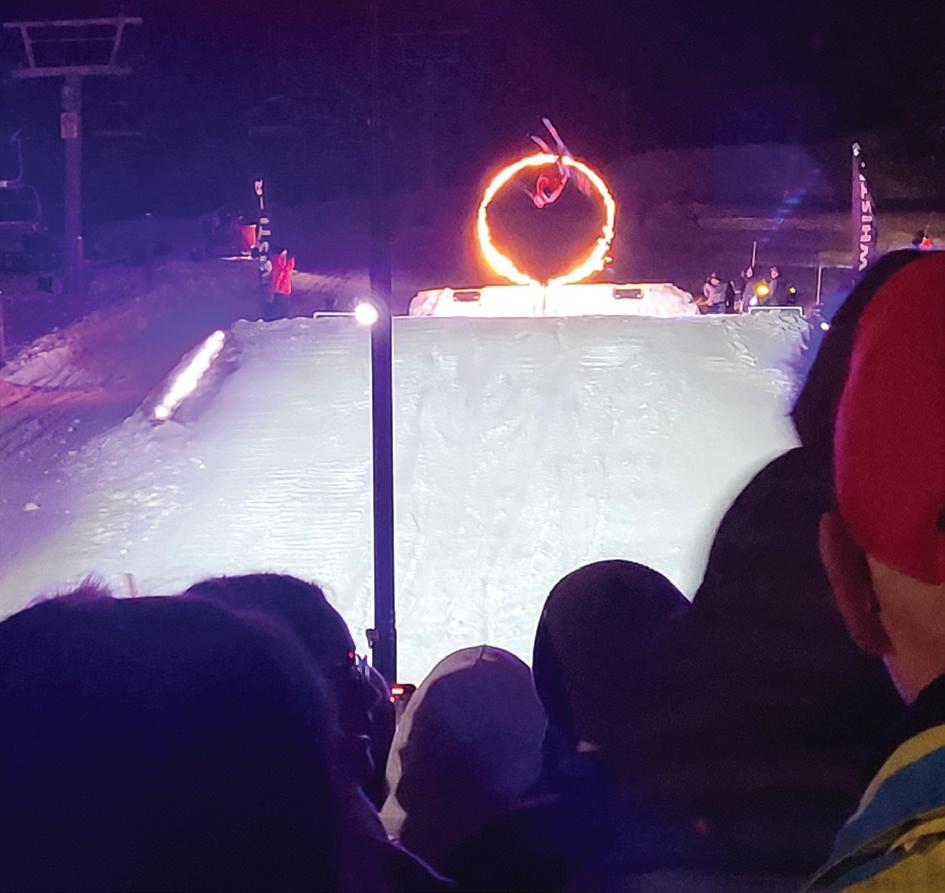






Municipality of Whistler
Apply today to be part of the Park Eats program!

The RMOW is looking for food trucks, pop-ups and delivery services to Whistler’s parks for summer 2023

Vendor applications are due by March 26, 2023.
For more information and a link to the application, visit whistler.ca /ParkEats
Resort Municipality of Whistler whistler.ca/parks

The Resort Municipality of Whistler (RMOW) is seeking qualified applicants to serve in a voluntary capacity on the Transportation Advisory Group (TAG).
The Resort Municipality of Whistler (RMOW) is seeking qualified applicants to serve in a voluntary capacity on the Transportation Advisory Group (TAG).
The purpose of the Transportation Advisory Group is to identify transportation related issues and opportunities to, from, and within Whistler. Using a social, environmental and economic lens, the TAG provides Council with strategic advice and recommendations regarding the assessment of, planning for, and implementation of transportation initiatives for the Resort Community.
The purpose of the Transportation Advisory Group is to identify transportation related issues and opportunities to, from, and within Whistler. Using a social, environmental and economic lens, the TAG provides Council with strategic advice and recommendations regarding the assessment of, planning for, and implementation of transportation initiatives for the Resort Community.
Four Citizens-at-Large are appointed to TAG by Council for a two year term and typically meet quarterlyfor 3 hours during business hours. Download the TAG Terms of Reference at: whistler.ca/committees.
Four Citizens-at-Large are appointed to TAG by Council for a two year term and typically meet quarterly for 3 hours during business hours. Download the TAG Terms of Reference at: whistler.ca/committees.
To apply, submit a resume and brief statement highlighting relevant experience and interest in participating on this committee by email to edalsanto@whistler.ca or mail:
To apply, submit a resume and brief statement highlighting relevant experience and interest in participating on this committee by email to edalsanto@whistler.ca or mail:
Transportation Advisory Group c/o Emma DalSanto Resort Municipality of Whistler 4325 Blackcomb Way
Transportation Advisory Group c/o Emma DalSanto
Resort Municipality of Whistler 4325 Blackcomb Way
Whistler, BC V8E 0X5
Whistler, BC V8E 0X5
ARIES (March 21-April 19): Noah Webster (1758–1843) worked for years to create the first definitive American dictionary. It became a cornucopia of revelation for poet Emily Dickinson (1830-1886). She said that for many years it was her “only companion.” One biographer wrote, “The dictionary was no mere reference book to her; she read it as a priest his breviary—over and over, page by page, with utter absorption.” Now would be a favourable time for you to get intimate with a comparable mother lode, Aries. I would love to see you find or identify a resource that will continually inspire you for the rest of 2023.
TAURUS (April 20-May 20): “The aspects of things that are most important for us are hidden because of their simplicity and familiarity.” So declared Taurus philosopher Ludwig Wittgenstein in his book Philosophical Investigations. Luckily for you Tauruses, you have a natural knack for making sure that important things don’t get buried or neglected, no matter how simple and familiar they are. And you’ll be exceptionally skilled at this superpower during the next four weeks. I hope you will be gracious as you wield it to enhance the lives of everyone you care about. All of us non-Bulls will benefit from the nudges you offer as we make our course corrections.
GEMINI (May 21-June 20): Poet Carolyn Kizer said the main subject of her work was this: “You cannot meet someone for a moment, or even cast eyes on someone in the street, without changing.” I agree with her. The people we encounter and the influences they exert make it hard to stay fixed in our attitudes and behaviour. And the people we know well have even more profound transformative effects. I encourage you to celebrate this truth in the coming weeks. Thrive on it. Be extra hungry for and appreciative of all the prods you get to transcend who you used to be and become who you need to be.
CANCER (June 21-July 22): If you have any interest in temporarily impersonating a Scorpio, the coming weeks will be a favourable time to play around. Encounters with good, spooky magic will be available. More easily than usual, you could enjoy altered states that tickle your soul with provocative insights. Are you curious about the mysteries of intense, almost obsessive passion? Have you wondered if there might be ways to deal creatively and constructively with your personal darkness? All these perks could be yours—and more. Here’s another exotic pleasure you may want to explore: that half-forbidden zone where dazzling heights overlap with the churning depths. You are hereby invited to tap into the erotic pleasures of spiritual experiments and the spiritual pleasures of erotic experiments.
LEO (July 23-Aug. 22): The circle can and will be complete—if you’re willing to let it find its own way of completing itself. But I’m a bit worried that an outdated part of you may cling to the hope of a perfection that’s neither desirable nor possible. To that outdated part of you, I say this: Trust that the Future You will thrive on the seeming imperfections that arise. Trust that the imperfections will be like the lead that the Future You will alchemically transmute into gold. The completed circle can’t be and shouldn’t be immaculate and flawless.
VIRGO (Aug. 23-Sept. 22): Shakespeare’s work has been translated from his native English into many languages. But the books of Virgo detective novelist Agatha Christie have been translated far more than the Bard’s. (More info: tinyurl.com/ChristieTranslations.) Let’s make Christie your inspirational role model for the next four weeks. In my astrological estimation, you will have an extraordinary capacity to communicate with a wide variety of people. Your ability to serve as a mediator and go-between and translator will be at a peak. Use your superpower wisely and with glee!
was also physically attractive and charismatic. When he performed, some people in the audience swooned and sighed loudly as they threw their clothes and jewelry onstage. But there was another side of Liszt. He was a generous and attentive teacher for hundreds of piano students, and always offered his lessons free of charge. He also served as a mentor and benefactor for many renowned composers, including Wagner, Chopin, and Berlioz. I propose we make Liszt your inspirational role model for the next 11 months. May he rouse you to express yourself with flair and excellence, even as you shower your blessings on worthy recipients.
SCORPIO (Oct. 23-Nov. 21): This may risk being controversial, but in the coming weeks, I’m giving you cosmic authorization to engage in what might appear to be cultural appropriation. Blame it on the planets! They are telling me that to expand your mind and heart in just the right ways, you should seek inspiration and teaching from an array of cultures and traditions. So I encourage you to listen to West African music and read Chinese poetry in translation and gaze at the art of Indigenous Australians. Sing Kabbalistic songs and say Lakota prayers and intone Buddhist chants. These are just suggestions. I will leave it to your imagination as you absorb a host of fascinating influences that amaze and delight and educate you.
SAGITTARIUS (Nov. 22-Dec. 21): “All the world’s a stage,” Shakespeare wrote, “and all the men and women merely players.” That’s always true, but it will be even more intensely accurate for you in the coming weeks. High-level pretending and performing will be happening. The plot twists may revolve around clandestine machinations and secret agendas. It will be vital for you to listen for what people are NOT saying as well as the hidden and symbolic meanings behind what they are saying. But beyond all those cautionary reminders, I predict the stories you witness and are part of will often be interesting and fun.
CAPRICORN (Dec. 22-Jan. 19): In this horoscope, I offer you wisdom from Capricorn storyteller Michael Meade. It’s a rousing meditation for you in the coming months. Here’s Meade: “The genius inside a person wants activity. It’s connected to the stars; it wants to burn and it wants to create and it has gifts to give. That is the nature of inner genius.” For your homework, Capricorn, write a page of ideas about what your genius consists of. Throughout 2023, I believe you will express your unique talents and blessings and gifts more than you ever have before.
AQUARIUS (Jan. 20-Feb. 18): Greek writer Nikos Kazantzakis (1883–1957) was nominated nine times for the prestigious Nobel Prize in Literature, but never won. He almost broke through in the last year of his life, but French author Albert Camus beat him by one vote. Camus said Kazantzakis was “a hundred times more” deserving of the award than himself. I will make a wild prediction about you in the coming months, Aquarius. If there has been anything about your destiny that resembles Kazantzakis’s, chances are good that it will finally shift. Are you ready to embrace the gratification and responsibility of prime appreciation?
PISCES (Feb. 19-March 20): Piscean educator Parker Palmer has a crucial message for you to meditate on in the coming weeks. Read it tenderly, please. Make it your homing signal. He said, “Solitude does not necessarily mean living apart from others; rather, it means never living apart from one’s self. It is not about the absence of other people—it is about being fully present to ourselves, whether or not we are with others. Community does not necessarily mean living face-to-face with others; rather, it means never losing the awareness that we are connected to each other.”
Application deadline: December 23, 2020 at 4:30 p.m.
Application deadline: January 31, 2023 at 4:30 p.m.
Resort Municipality of Whistler whistler.ca/committees
LIBRA (Sept. 23-Oct. 22): Libran musician Franz Liszt (1811–1886) was a prolific and influential genius who created and played music with deep feeling. He
Homework: What is the best, most healing lie you could tell? Newsletter.FreeWillAstrology.com.
In addition to this column, Rob Brezsny creates
In-depth weekly forecasts designed to inspire and uplift you. To buy access, phone 1-888-499-4425. Once you’ve chosen the Block of Time you like, call 1-888-682-8777 to hear Rob’s forecasts. www.freewillastrology.com
RE-USE-IT CENTRE Donations daily 10 am to 4 pm



Accepting pre-loved clothing, gear and household items. Shopping daily 10 am to 6 pm 8000 Nesters Road 604-932-1121 RE-BUILD-IT CENTRE Donations daily 10 am to 5 pm Accepting pre-loved furniture, tools and building supplies Shopping daily 10 am to 5 pm 1003 Lynham Road 604-932-1125



SeatoSkyTechnologyServices



ServiceCoordinator Weareseekingacustomer-focused ServiceCoordinatortojoinourteamof ITprofessionals. Inthisrole,notwodayswilleverbe thesame!Yourdaywillinvolvethe perfectmixofadmin,clerical,dispatch andcustomerserviceduties.Weoffer afunandflexibleworkenvironment thatsupportsahealthyworklifebalanceincludingahybridworkenvironmentandflexibilityonstartandfinish times.Sendusanemailwithyourresumeto:jobs@seatoskyit.com Visitusonlineatwww.seatoskyit.com/ about-sea-to-sky-technology-services/ jobs/







Full-time,part-time&tempjobs. Nocost,nostrings.604-905-4194 www.whistler-jobs.com











The Assistant Superintendent is engaged in the repair, improvement, and daily preparation of the golf course grounds. This includes meeting or exceeding the established standards for guest and employee satisfaction, along with effective cost controls for the Maintenance department. The Assistant Superintendent leads by example by taking a proactive position to all issues concerning the operation of the golf course.


What we offer: a fun team and work environment, competitive compensation and benefits package, and access to legendary golf facilities.













TO VIEW OUR OPPORTUNITIES, AND TO APPLY, VISIT US ONLINE AT WHISTLERGOLF.COM/CAREERS.



















We are currently hiring the following positions for projects in WHISTLER.

Journeymen Carpenters (5+ years)
Journeymen Carpenters (5+ years)

Skilled Labourers
Skilled Labourers
We offer competitive pay, a benefits package, company cell phone plan, interesting projects, a collaborative team environment, and a chance to improve your existing skills.
We are looking for dedicated team players who want to join a rapidly growing company and establish a long-term career in construction.



We are currently hiring the following positions for projects in WHISTLER. We offer competitive pay, a benefits package, company cell phone plan, interesting projects, a collaborative team environment, and a chance to improve your existing skills. We are looking for dedicated team players who want to join a rapidly growing company and establish a long-term career in construction. Please forward your resume to Lea@gccltd.ca
Please forward your resume to Lea@gccltd.ca
•
look forward to hearing from you!



































We have a rare opportunity to work at one of Canada’s best-read online newsmedia companies, Glacier Media.
You will be part of the Pique Newsmagazine team, a division of Glacier Media. In your role you will consult with local businesses to offer cutting edge marketing solutions: programmatic, social media, SEO, sponsored content and community display advertising on our website and yes, we still reach customers through our trusted newspaper as well.
• You are comfortable making cold calls and setting up/leading meetings with new and existing clients.
• A self-starter with a consultative selling approach working with clients planning both digital and print advertising campaigns.

• Building and maintaining client relationships with your exceptional communication skills comes easy to you.
• You are a goal orientated individual with a positive attitude and a willingness to learn.
• You possess strong organizational skills and have the ability to multitask in a fast-paced environment.
• Competitive salary + uncapped commission package.
• Comprehensive / competitive group health and welfare benefits
• Extensive onboarding training and ongoing support.
Whistler has a worldwide reputation for outdoor recreation and boasts a vibrant village featuring restaurants, bars, retail and more. While this legendary resort is an international mountain sports mecca, it is also a down-to-earth mountain town, where community and culture have forged a unique environment. This opportunity offers you the chance to call a world-class ski hill you own—and if you are a local, well you know you’re in the right place to forge a career and lucky to call Whistler your home.
To apply, please submit your cover letter and resume in confidence to Susan Hutchinson, shutchinson@wplpmedia.com
Closing date: Open until filled.
Pique Newsmagazine is seeking a Sales Coordinator.

Pique Newsmagazine is looking to fill a focal role of sales coordinator in our advertising sales department. The chosen candidate will possess uncompromising customer service and work well under pressure while thriving in a fast-paced deadline driven news media environment. The ideal applicant will have previous experience working with a print/digital media sales team. Strong administrative and communication skills are essential in this role, and attention to detail is a must. You will be highly organized and able to act as a liaison between departments, as well as possess a high level of professionalism when dealing with clients. We offer an excellent remuneration package as well as a benefits plan.
Located in the mountain resort town of Whistler, British Columbia, Pique Newsmagazine is the unequivocal leader in reporting, interpreting and understanding the culture of the Coast Mountains and what it means to those who live, work and play in Whistler.
Interested candidates should forward their resume and a cover letter to Susan Hutchinson at: shutchinson@wplpmedia.com
Deadline is February, 10th 2023. No phone calls please.
Whistler's
We sell Norco, Giant, Kona and Devinci bikes and a wide range of parts and accessories.

Retail applicants should have relevant experience in bicycle or outdoor adventure retail.
Repair shop applicants should have at least one year of experience as a Bike Mechanic in a retail or rental setting.
Email us a resume • whistlerbikeco@gmail.com www.bikeco.ca
Be a part of an amazing team as our newest Digital Account Representative!
year round bike shop requires retail sales and repair shop staff for our busy Spring season.
Our Whistler office is looking for an Administrative Assistant to support the team. This is a full time in-office role, and the successful candidate will own the following responsibilities:
• Assemble and file personal and corporate tax returns
• Photocopy, scan, file, data entry, update & maintain records
• Write & distribute correspondence, assist clients
• Reception coverage, greet clients, maintain tidy office/kitchen
• Provide administrative support to staff as required
• Previous administrative/office experience
• Strong proficiency with Microsoft Office programs
• Ability to work under pressure, manage deadlines and prioritize workload
• Be very detail-oriented - we mean meticulous!
Our people-first approach to talent has earned us a spot among Canada’s Top 100 Employers for 2022. This recognition is a milestone we’re thrilled to add to our collection of awards for both experienced and student talent experiences.

Total rewards that matter: We pay for performance with competitive total cash compensation that recognizes and rewards your contribution. We provide flexible benefits from day one, and a market-leading personal time off policy. We’re committed to supporting your overall wellness beyond working hours, and provide reimbursement for wellness initiatives that fit your lifestyle.
Everyone counts: We believe every employee should have the opportunity to participate and succeed without barriers.
Ready to make your mark at BDO? Please send your up-to-date resume to whistler@bdo.ca or apply on-line at www.bdo.ca/careers

Thank you to all applicants that apply. We will contact you if you are selected for a personal interview. No phone calls and/ or agencies please. If you are applying for this role, you should have current legal working rights in Canada. As part of our interview process, you may be subject to background inquiries.
At the Liquor Distribution Branch (LDB) our vision of ‘Service. Relationships. Results.’ is all about providing a valued service, building strong relationships with our stakeholders, and achieving greater results for the province.
The LDB is one of two branches of government responsible for the cannabis and liquor industry of B.C. We operate the wholesale distribution of beverage alcohol within the province, as well as the household retail brand of BC Liquor Stores.
We employ nearly 5,000 people in over 200 communities and have been named one of BC’s Top Employers 14 times over for offering exceptional places to work rooted in values of fairness and respect, work-life balance, and inclusion and diversity. We believe that our people are our greatest asset. Being a reputable employer with programs of skills training and professional development are what attract candidates to BC Liquor Stores, while our progressive, forward-thinking culture is why employees with a growth mindset thrive.
Auxiliary positions are on-call, meaning hours of work are not guaranteed and subject to availability. Some auxiliary employees may not initially work a full 35-hour week, but with more hours worked and more seniority gained, more opportunities for more hours of work will follow.
Auxiliary positions are not permanent full-time but can lead to permanent full-time opportunities with a very competitive total compensation package, including a comprehensive pension plan, medical and dental coverage (including massage and physiotherapy), tuition reimbursement and scholarship programs, and access to public service employee benefits including career support services, financial and legal services, and employee and family counselling.
We are dedicated to the highest quality of customer service, delivered with friendliness, individual pride, initiative, and retail passion! If you fit this description and you are prepared to work in a fast-paced environment, we encourage you to apply to become a part of the Whistler area BC Liquor Stores.
To be eligible, applicants must meet the following qualification requirements:
• Be at least 19 years of age
• Be able to legally work in Canada
• Be able to provide excellent customer service
• Be able to communicate effectively and professionally with the public
• Be able to demonstrate aptitude for cashier and related duties, including calculations
• Be able to perform physically demanding work, including lifting 20-25 kg boxes
• Have a valid Serving It Right Certificate™
• A Criminal Record Check is required.
BC Liquor Store Sales Associates may be required to operate a variety of mechanical and hand-operated equipment, in addition to handling large volumes of bottles as part of the LDB’s recycling program.

Rate of Pay as of April 10, 2022: Auxiliary Sales Associate - $20.33 per hour
Seasonal Sales Associate - $18.92 per hour
For exciting and challenging retail opportunities, please apply online at: http://bcliquorstores.prevueaps.ca/pages/openings/ Or apply in person at: Whistler Marketplace 101-4360 Lorimer Rd, Whistler
On November 1, 2021 the BC Public Service announced the COVID-19 Vaccination Policy that defines the conditions and expectations for BC Public Service employees regarding vaccination against COVID-19. Among other possible measures, proof of vaccination will be required. It is a term of acceptance of employment that you agree to comply with all vaccination requirements that apply to the public service. More information can be found here: https://www2.gov.bc.ca/ gov/content/careers-myhr/all-employees/safety-health-well-being/health/covid-19/covid-19vaccination-policy-for-bc-public-service-employees






























Mongoose prey
Run up a tab
Zodiac sign
city
common
way
Cousteau’s middle name
Grain husks
Lover in a play
Feminine principle, to Jung
Runway hazard
Walked
Subcontractors
GI tags
Jotter’s need
Dance wildly
Crimson Tide st.
Sackers of Rome
Kind of thief
Type of hairstyle
Sundial number
Flood barrier
Blank a tape
Protest song writer
Reprimand
Flower organ
Turned over and over
Simpson kid
Rock organism
The -- the merrier
Male doll
Young lady
Jealousy
Sturgeon product
Listener’s need
Dryer residue
Standof sh one
Speak publicly
Two ves for -- --
Emitting light
High school dance
Everglades wader
Lie --
Tiny speck
Supermarket employee
Flat broke
Frilly aprons
Family nickname


Fills with happiness
Daddy’s sister
Go with
Piece of broken glass
Not wholly
Hosp. personnel
Circus acts
Rx givers
Riata
Hi-tech scan
Nudge
Large pipe
Proprietor
Preference
Domestic fowl
Keeps after 93 As -- -- (generally)
Burn or sting
Pyramid builder
Sign over, as property
Danger
Milk, to Pierre
Evening meal
Any miss
Observe
Financial
Swimsuit half
Go against Galahad
TV network



UPS trucks
Throw away
Nest on a crag
Fervent aspirations
Battery’s “+” end
Cause goose bumps
Big dog
Threw a punch
Sauce with basil
This, to Pedro
Obi-Wan player
Years on end
Aunts and uncles
Dallas cager
-- Peron

IN EARLY 2020 , when there was this weird viral disease in China that seemed to be spreading around the world like a bad joke, I received an email. A promotion. A come-on.
The genesis of the email occurred three years earlier at a restaurant in downtown Halifax, The Press Gang Restaurant and Oyster Bar. Having stumbled in by accident, I was immediately drawn to the sizable array of scotch whisky bottles behind the bar.
After dinner, looking over the dessert menu, my attention fixed on a flight of scotch.
BY G.D. MAXWELLMy kind of dessert. But the offerings were all familiar Islay, Highland and Speyside malts. I’d read about a distillery in Cape Breton that had been in business long enough to have a 19-year-old whisky. I knew Cape Breton had been populated with immigrants from Scotland in the 18th century who discovered a place that looked like their home. Naturally, they brought a taste for good whisky and the knowledge to make it with them.
So, I asked if they could put together a flight of whiskies from that distillery. They could. They did. They were impressive.
Going through Cape Breton a few days later, I detoured to the distillery, Glenora, but was too early in the morning for a tour. Not too early, though, to load a couple of 12- and 19-year-old passengers in the back of the truck. When I finally got around to trying them, they were delicious.
And that’s how, in February 2020, I opened an email from Glenora that teasingly said, “Imagine owning a whole cask of whisky.”
I’d imagined that before. Often. Initially I’d imagined importing a cask of 30-year-old whisky for my 30th birthday. I’d imagined tapping some every year to see which of us was aging better. I imagined I knew the answer to that question, but investigating it would still be worthwhile.
But the arcane liquor laws in Quebec, the fact I couldn’t speak much French to the bureaucrats I had to work with to even think of importing a barrel of scotch, and the more important fact—I’d have to rob a bank to afford it—left the quest an unrealized dream.
But I rose to Glenora’s bait like a hungry, thirsty fish. After a number of email exchanges, I convinced them I just might be serious about one of the three casks of 25-yearold whisky they were looking to sell in toto.
So they sent samples. And I set up a blind tasting. Enlisted a knowledgeable friend. Tasted. Perhaps speciously decided one was more to my liking than the other two. Inquired further.
Meanwhile, since pricing hadn’t yet been discussed, I channelled my inner math nerd
and set up a spreadsheet that sensitized the most important variable: the amount left in the barrel after 25 years of thirsty angels taking their share, which is to say loss by evaporation. In that amount of time, the whisky left could well be 50 per cent or less of the initial fill volume.
To make a long story not quite as long, I bought the cask. It was half full. The golden liquid inside measured 67-per-cent alcohol by volume. Being capable of adding my own water, I had the distillery bottle it at cask strength and awaited delivery.
about the salutary effects of drinking whisky containing a higher percentage of alcohol. Internal sanitizer.
I also worried about sheltering in place with enough whisky to start my own bar. Decided the only safe course would be to be alcohol-free at least every other day. Discovered even that wasn’t enough. Thus became an outlier—one of those people who actually drank less during covid than before we were even aware covid was a word.
Of course, I spread the wealth among friends who were known to imbibe, passing
heck, just look at their title. Biased much?
But for the rest of the week, you couldn’t read a newspaper or watch a news cast or dip your toe into social media—I didn’t but people have told me—without wondering whether you’d slid down a time warp back to pre-prohibition days. I half expected to see a resurrection of the Woman’s Christian Temperance Union, though to be fair, I wouldn’t be gauche enough to ascribe it any particular gender, so don’t get your knickers in a knot. It’s just a historical reference.
There has already been some backlash to the CCSA study. In an opinion piece in the Globe and Mail last Friday, Dan Malleck, a professor in Brock University’s department of Health Sciences, pointed out some sobering facts about the recommendations. Most notably—and certainly appealing to a math nerd—was the study’s focus on relative, as opposed to absolute, risk of developing various maladies.

Before it ever got here, covid was declared a pandemic. Whistler Blackcomb closed for the season. Countries around the world closed their borders. We began to “shelter in place” and “socially distance.”
A week later, a very curious truck driver pulled up in front of my duplex and unloaded a pallet containing 21 cases, protecting 126 bottles of whisky... and an empty barrel. He wondered if I needed another friend. Bad timing on his part. Good timing on my part.
Breweries and distilleries began to divert their production to hand sanitizer. It contained 65-per-cent alcohol. I wondered
most of the largesse around at club rates, which is to say cost. Most of them managed to avoid the virus. But I didn’t think the experiment would pass peer review.
Fast-forward to last week. Judging from the reaction, much of Canada was shocked to learn that everything we knew about the negative effects of drinking alcohol was wrong. There is no safe amount and what was being touted as ‘low-risk’ was a measly two drinks per week. Week! Must be a typo.
The study, by the Canadian Centre on Substance Use and Addiction (CCSA) upended the old guidelines of 15 drinks per week. Well,
As he pointed out, while the study cited a nearly 100-per-cent risk increase for larynx cancer, the baseline for that form of cancer is roughly 0.0197 per cent of Canadians. Less than two per 10,000. Double that and you still don’t have enough people for a hand of bridge.
So while devil drink still wreaks havoc among far too many people, most of whom will ignore these guidelines as they’ve ignored past ones, if you tend to lead a healthy lifestyle, exercise, don’t smoke, etc., you’re likely in more danger from stressing over the new guidelines than you are to enjoy that glass of wine with your dinner or wee dram in the evening.
Cheers. ■






The success of these agents is a result of their quality service & professional expertise; but beyond that, and most importantly, what solidifies their success is the genuine care for their clients’ needs & dreams!





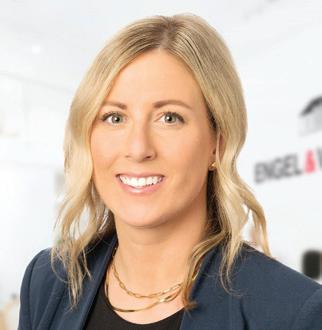








Whistler Village Shop
36-4314 Main Street Whistler BC V8E 1A8 Phone +1 604-932-1875 whistler.evrealestate.com
Squamish Station Shop
150-1200 Hunter Place · Squamish BC V8B 0G8 · Phone +1 778-733-0611 whistler.evrealestate.com












